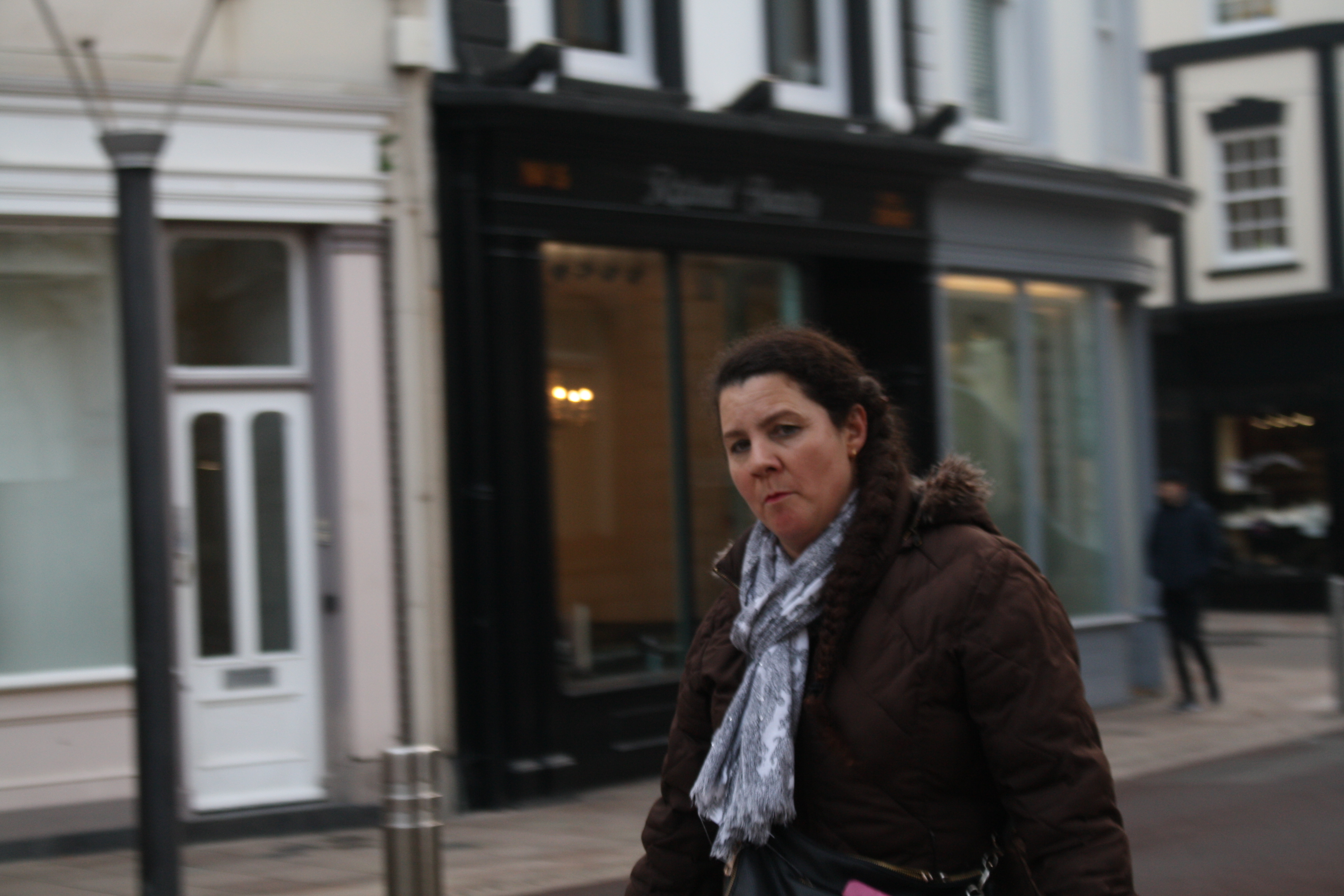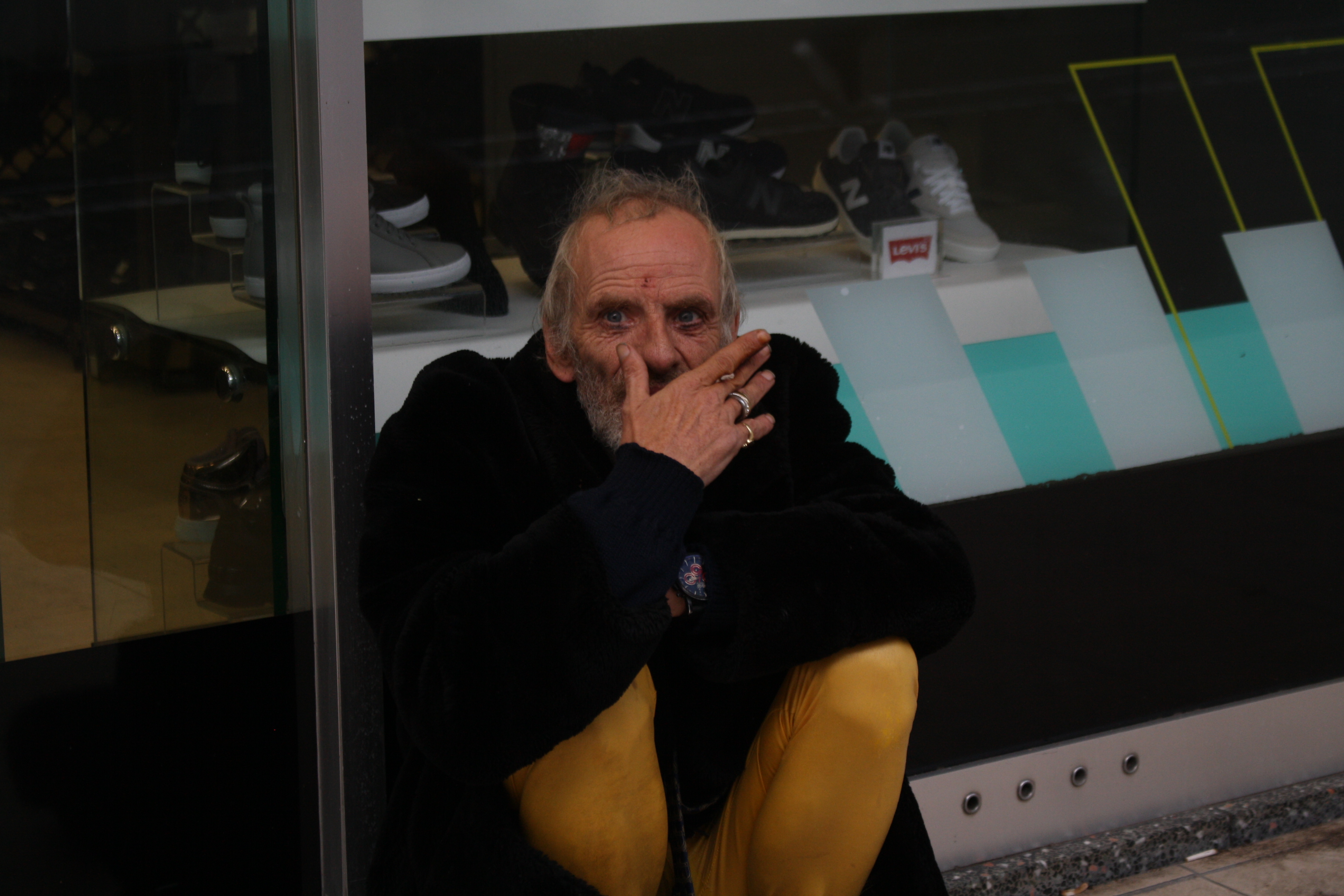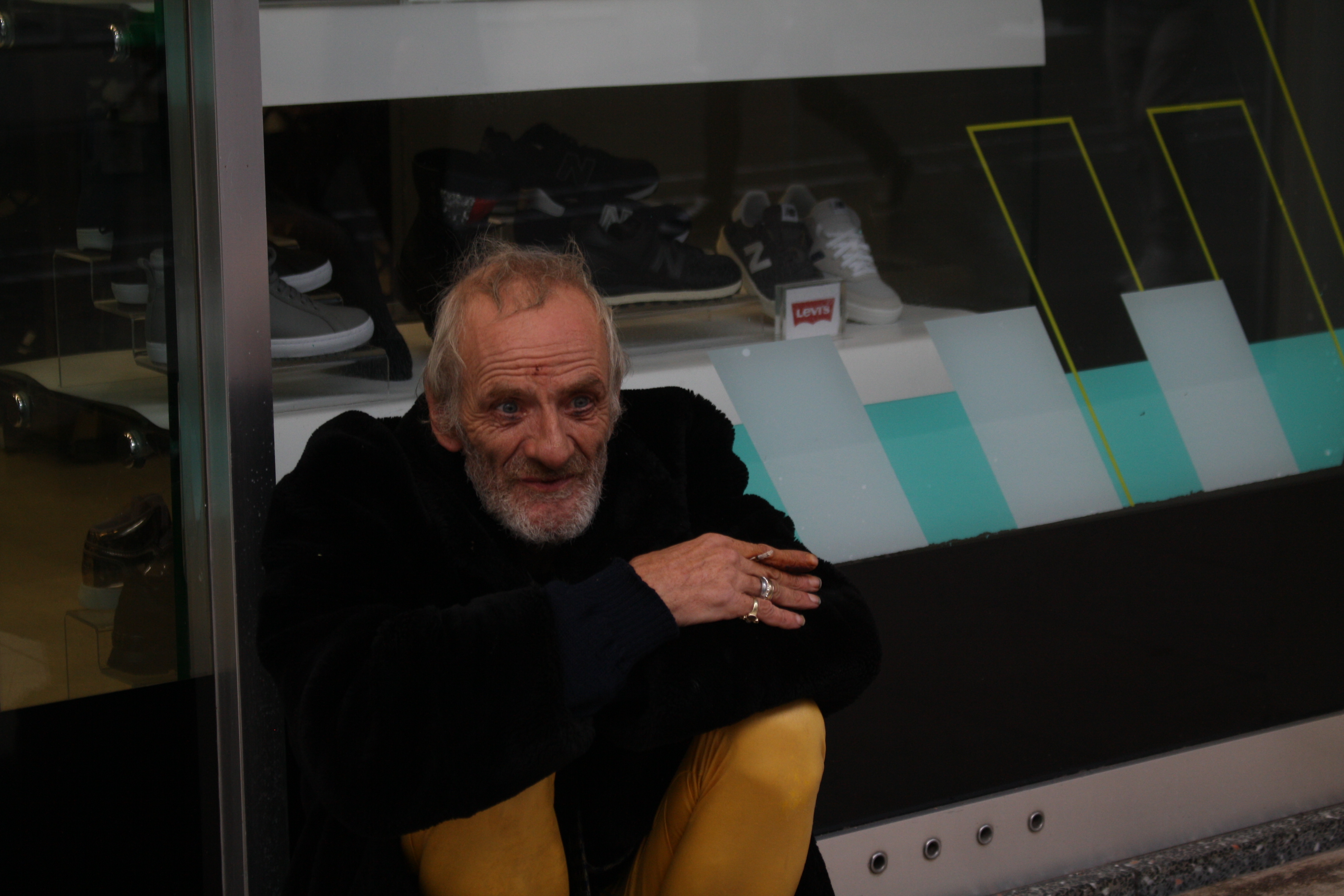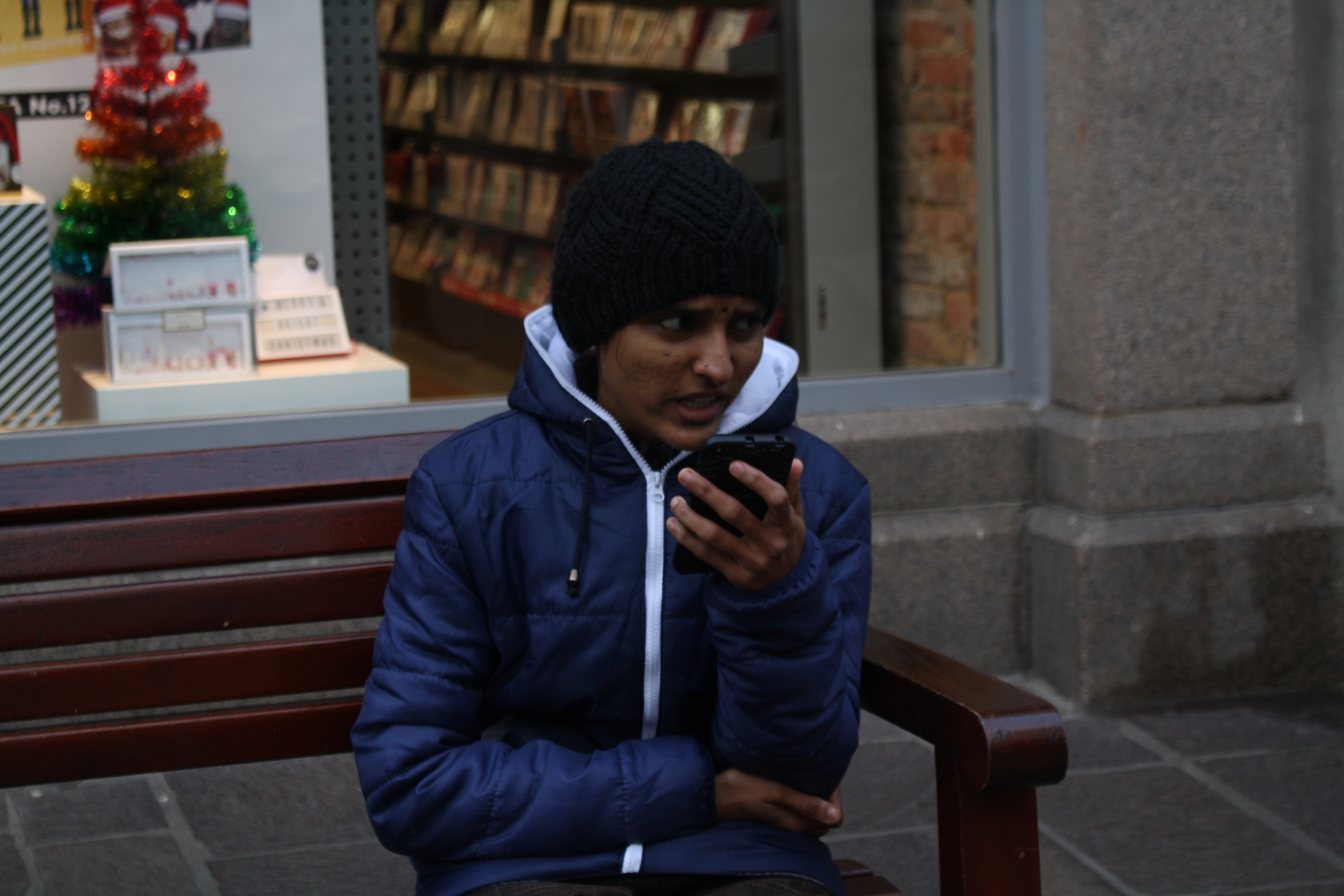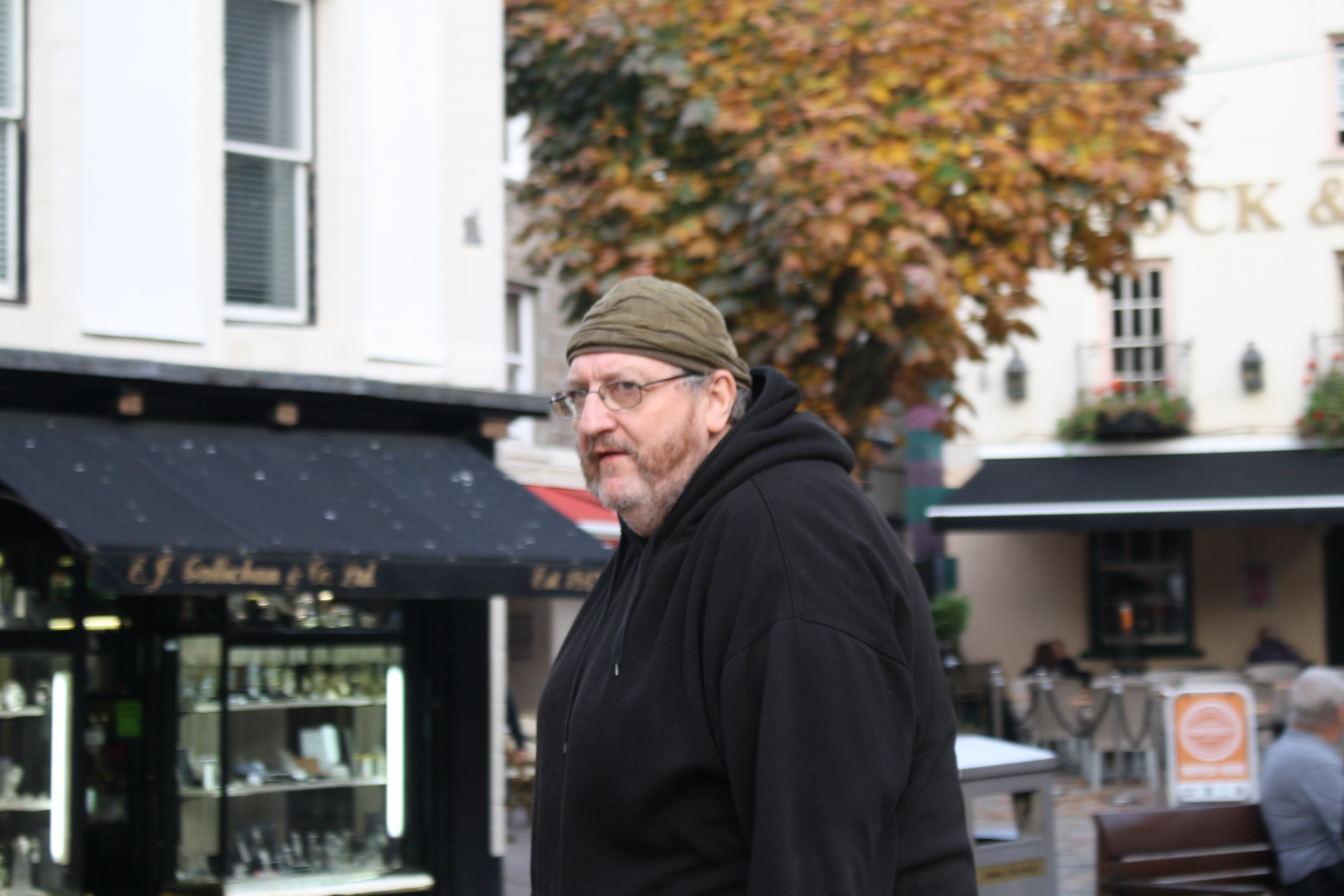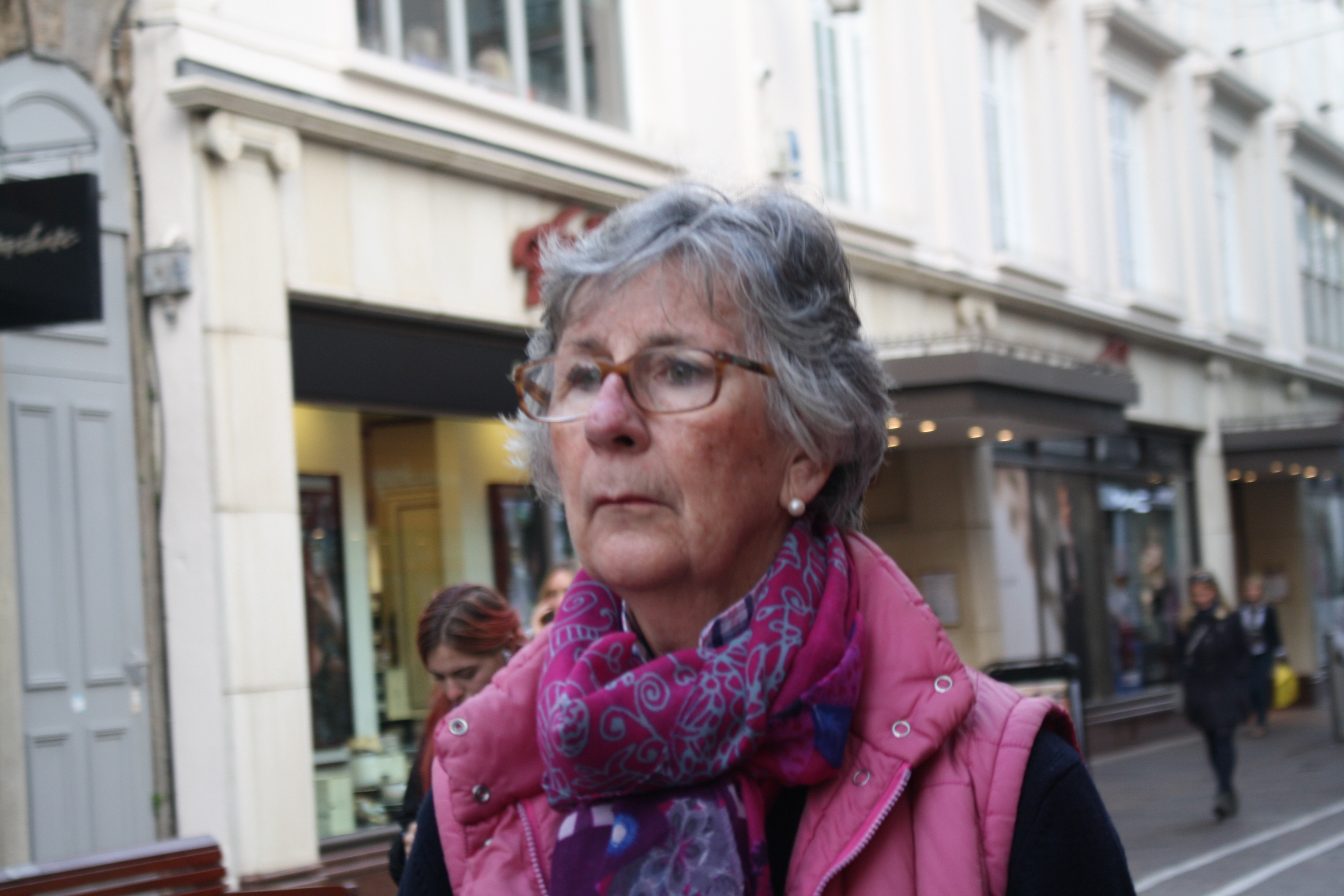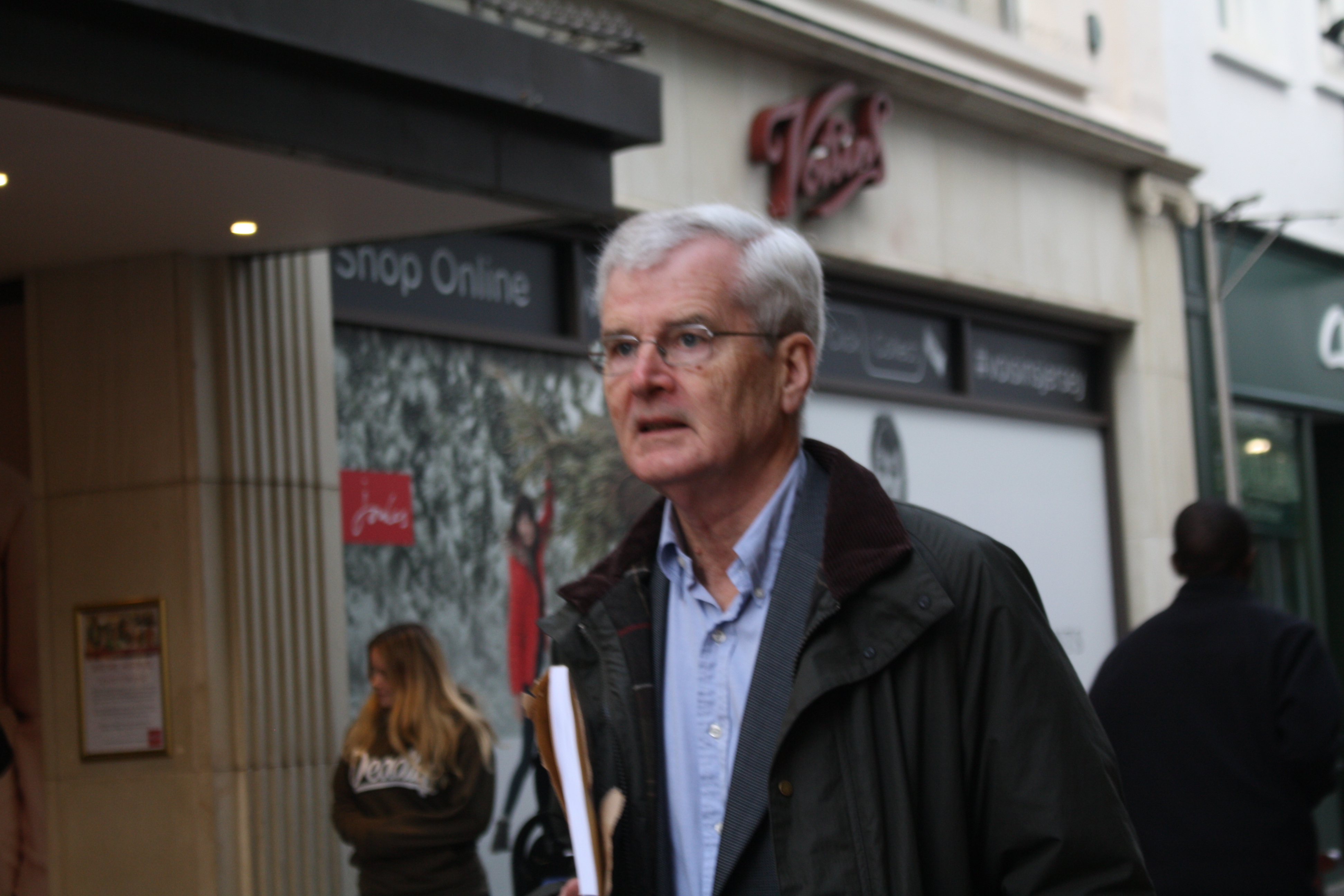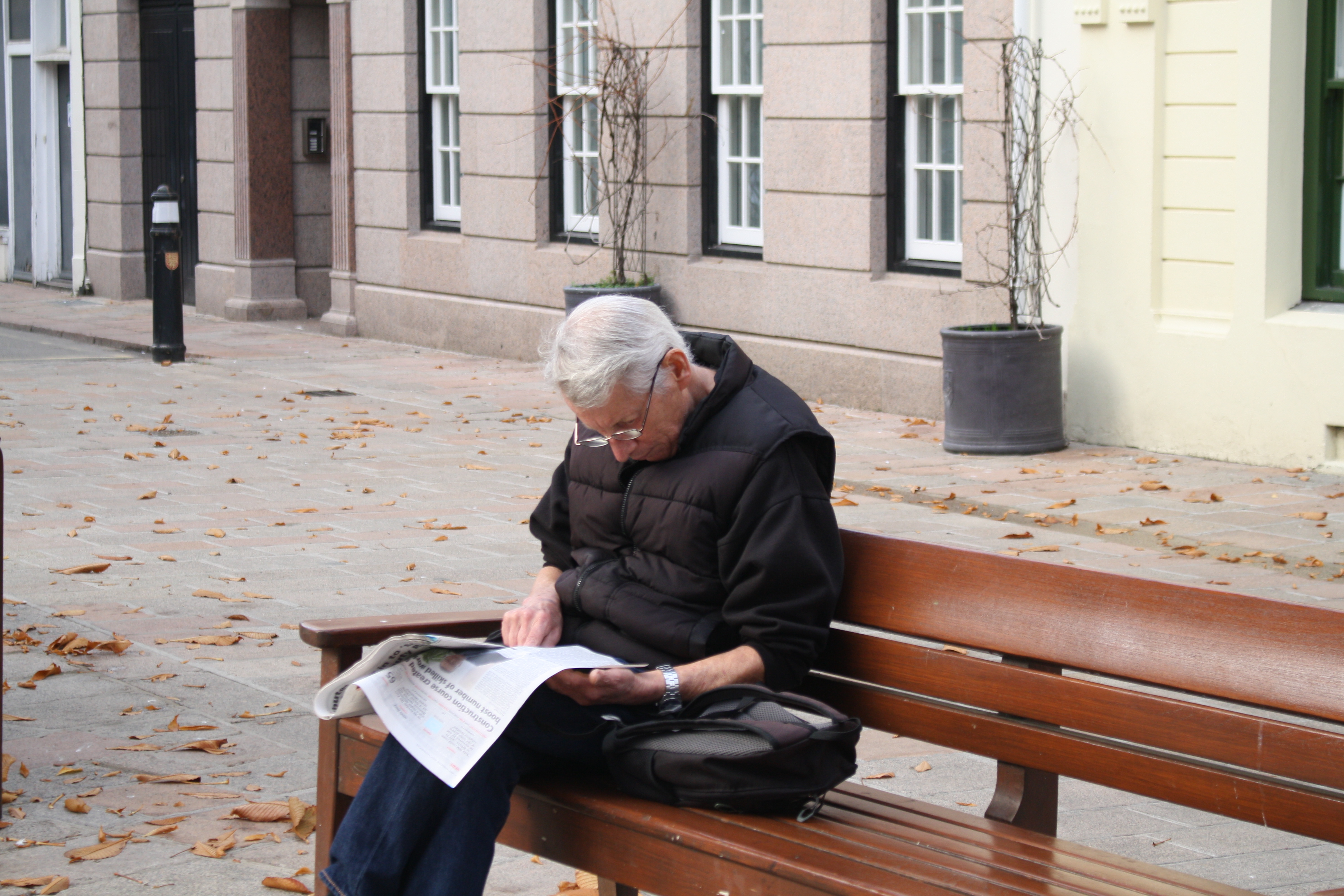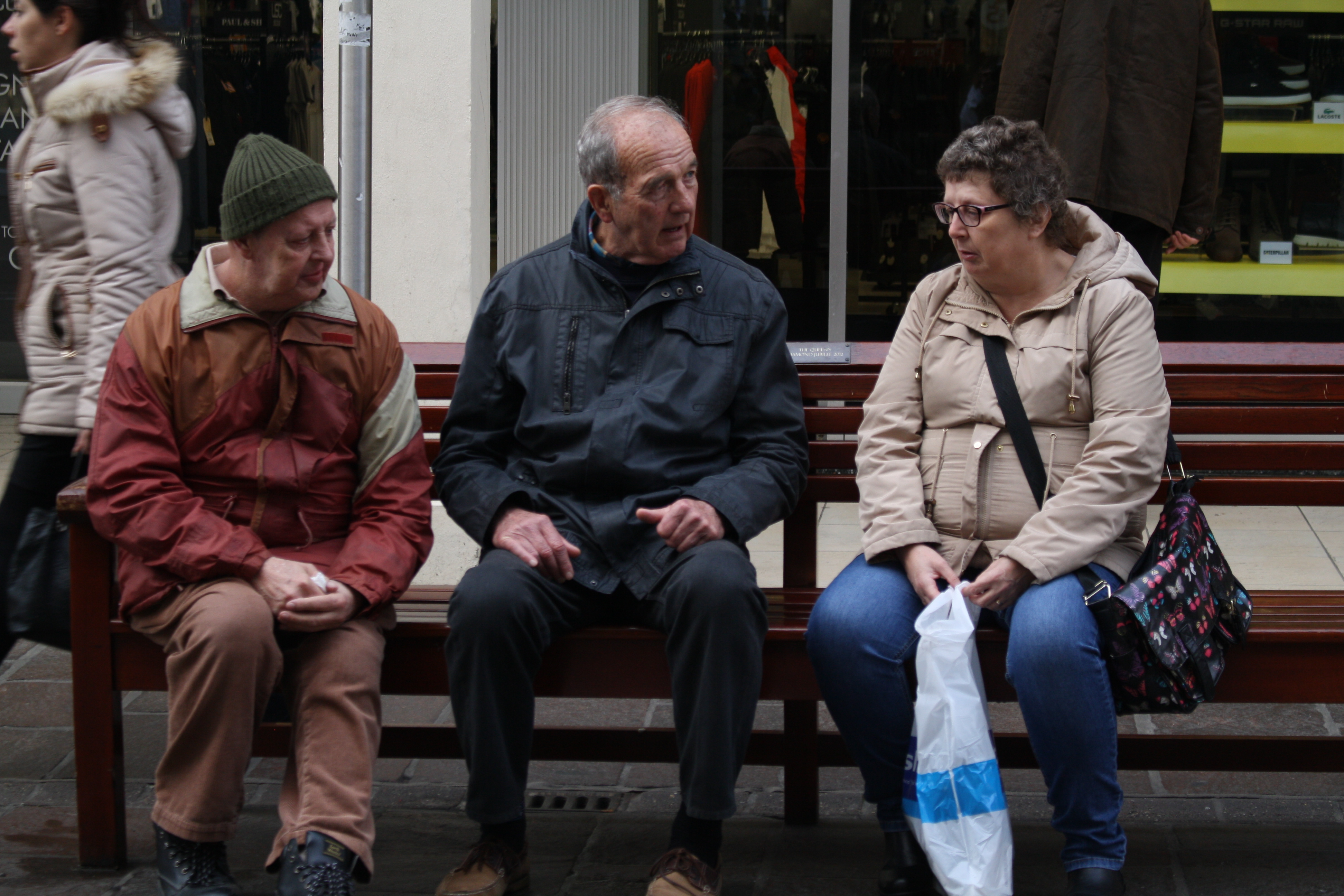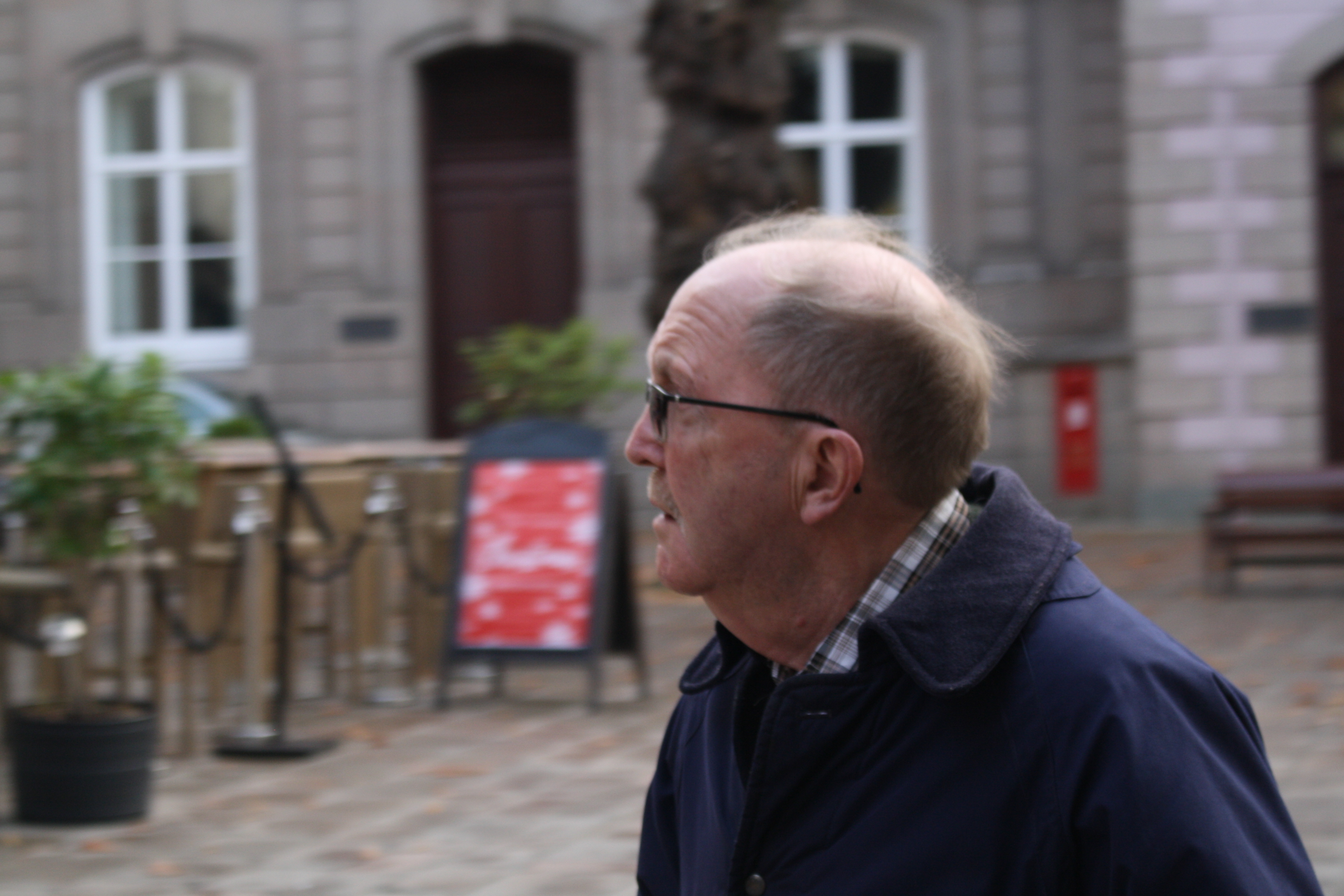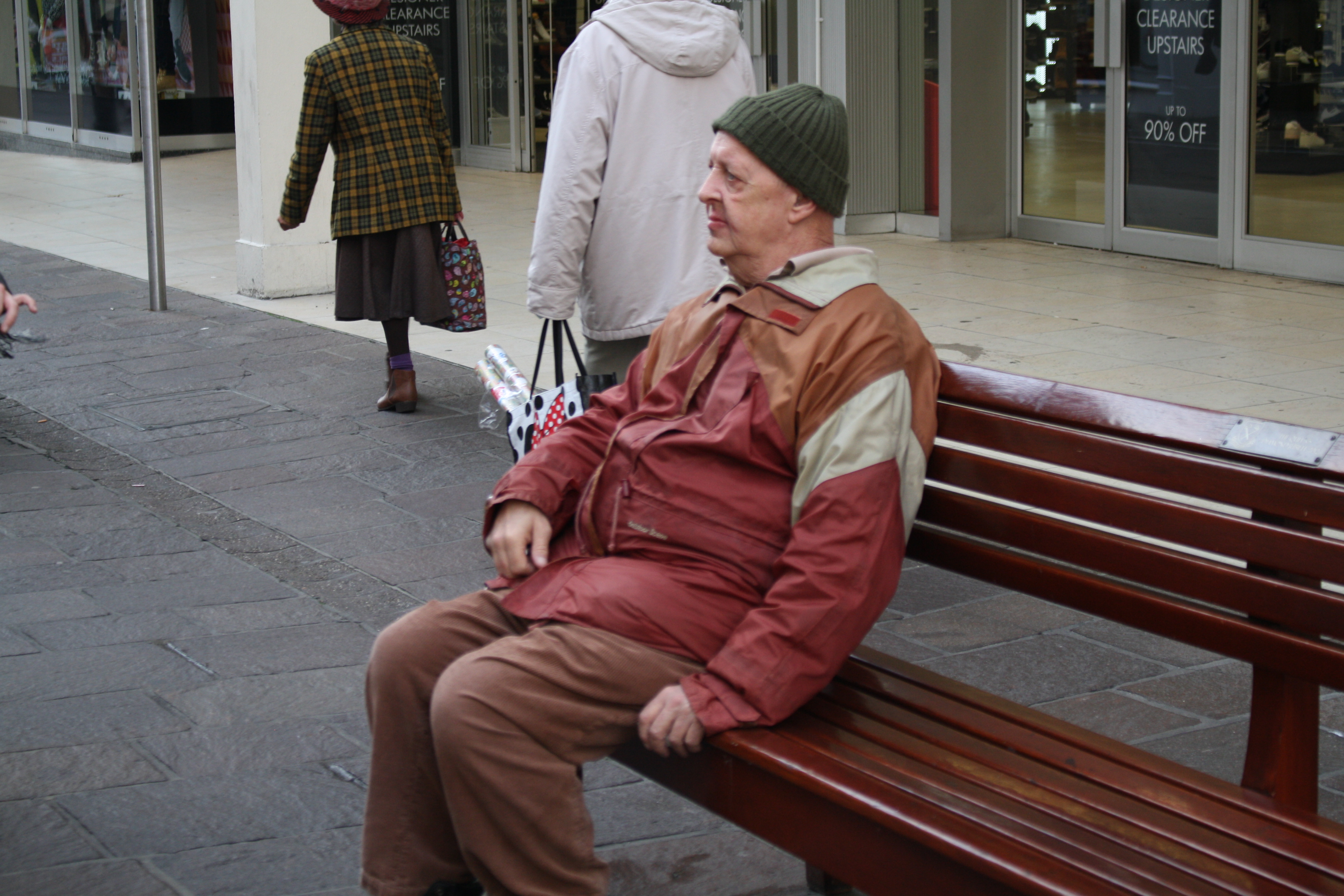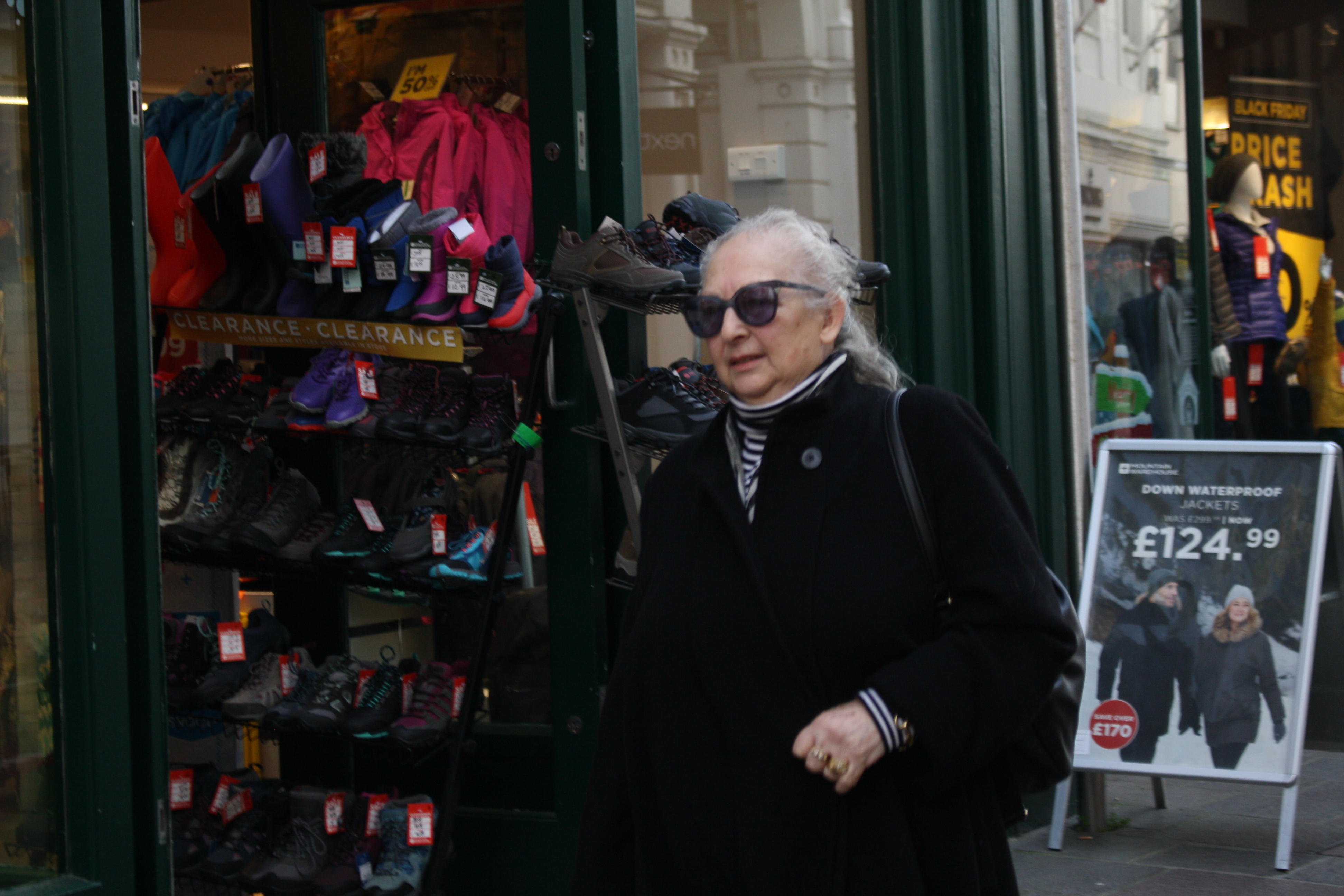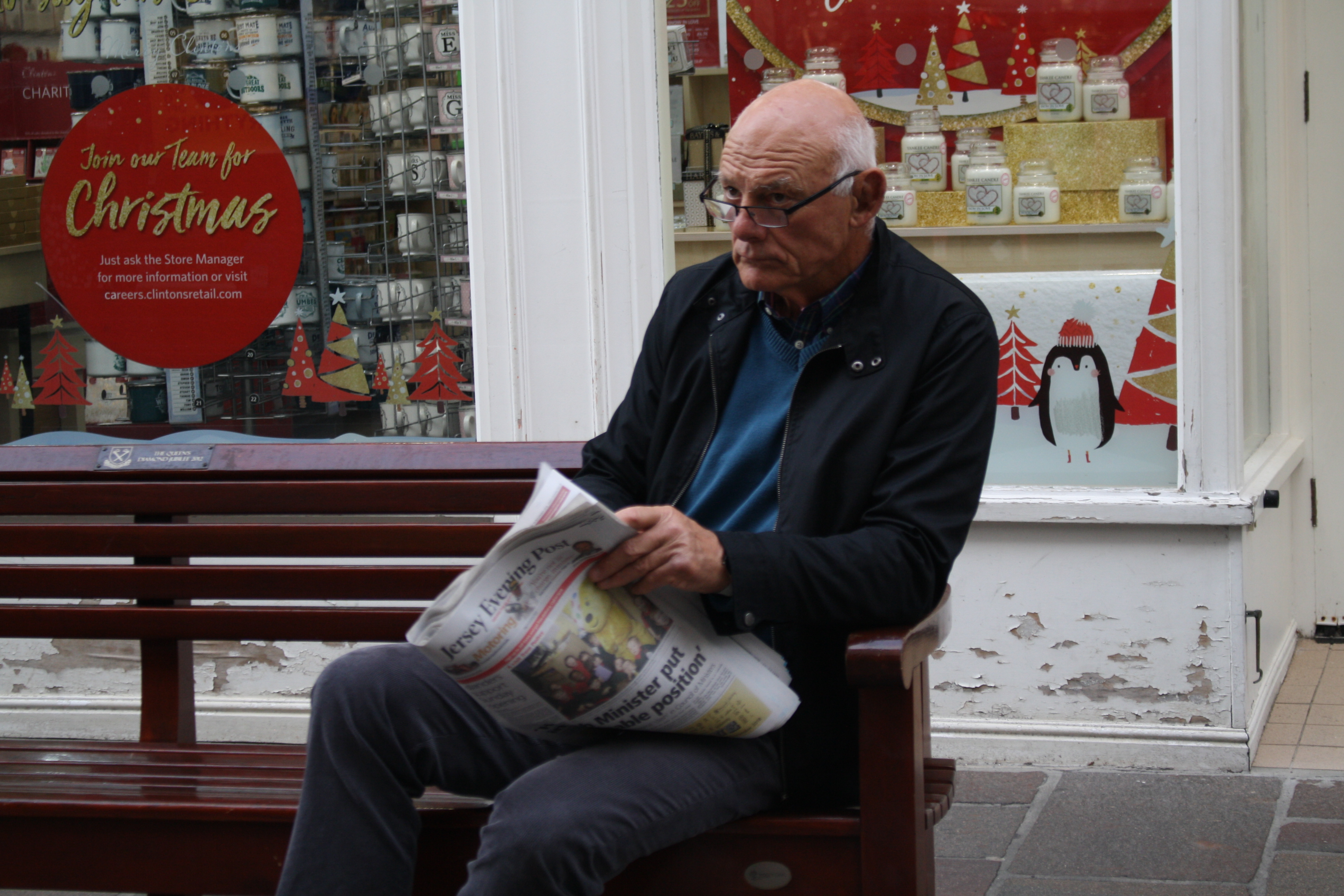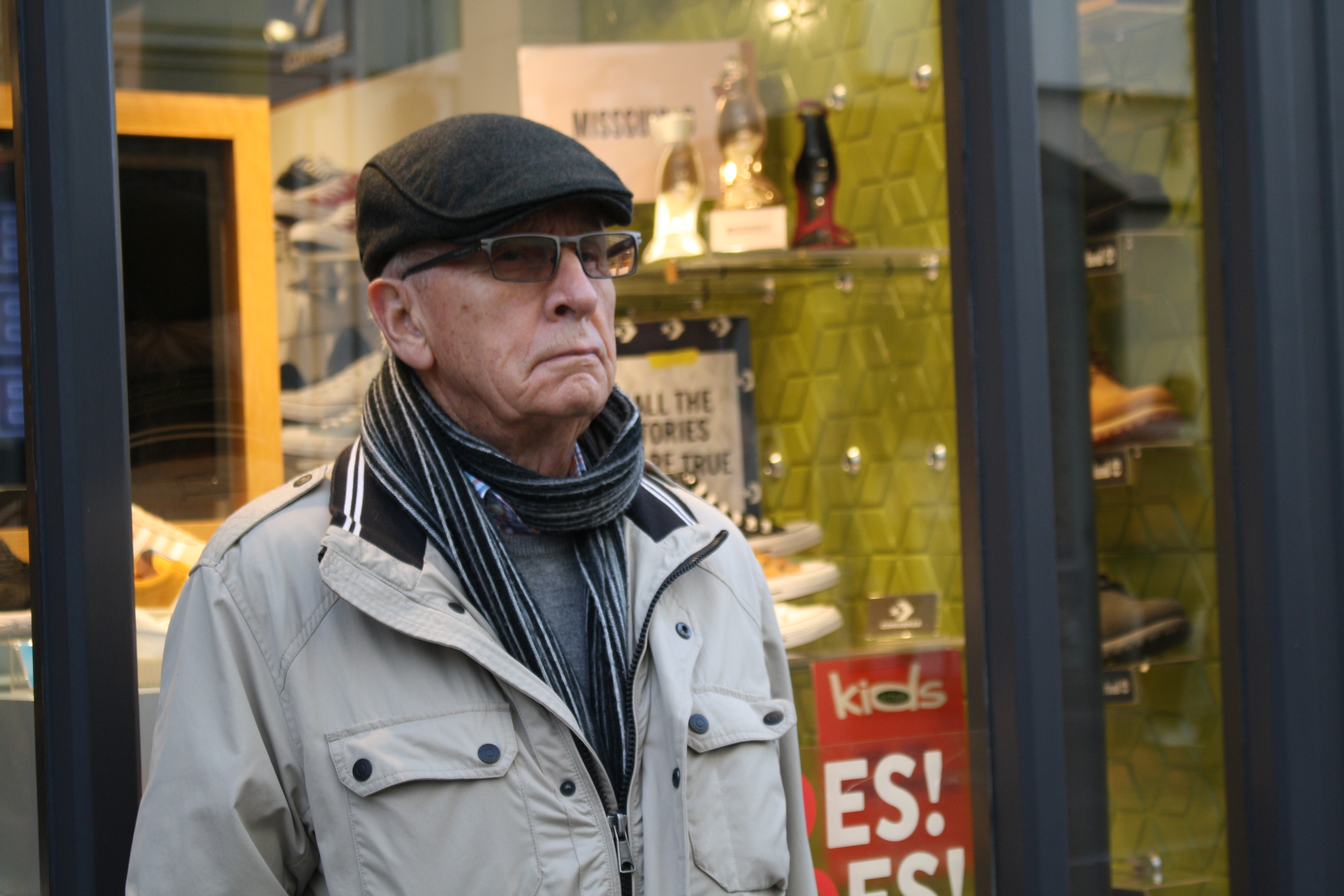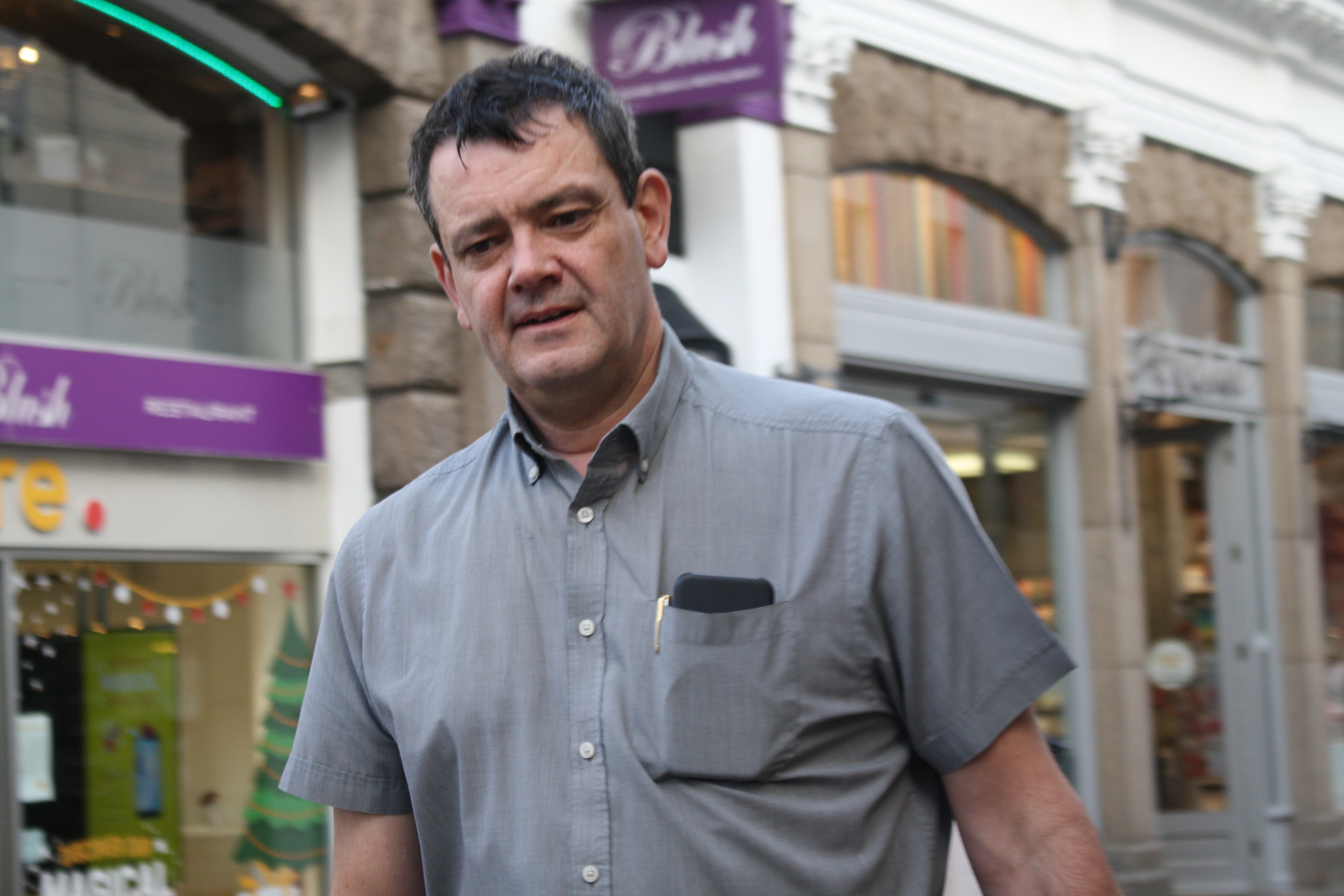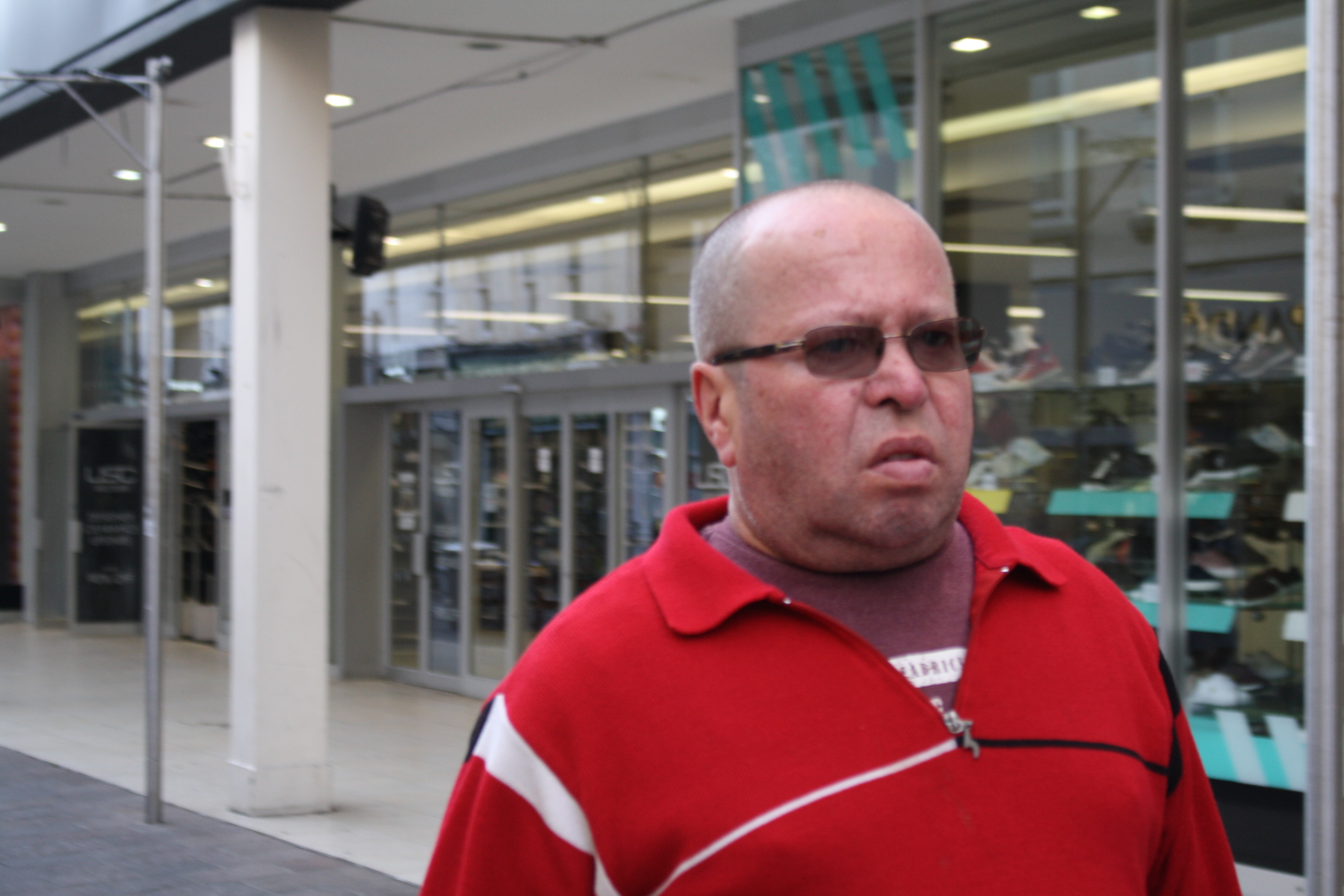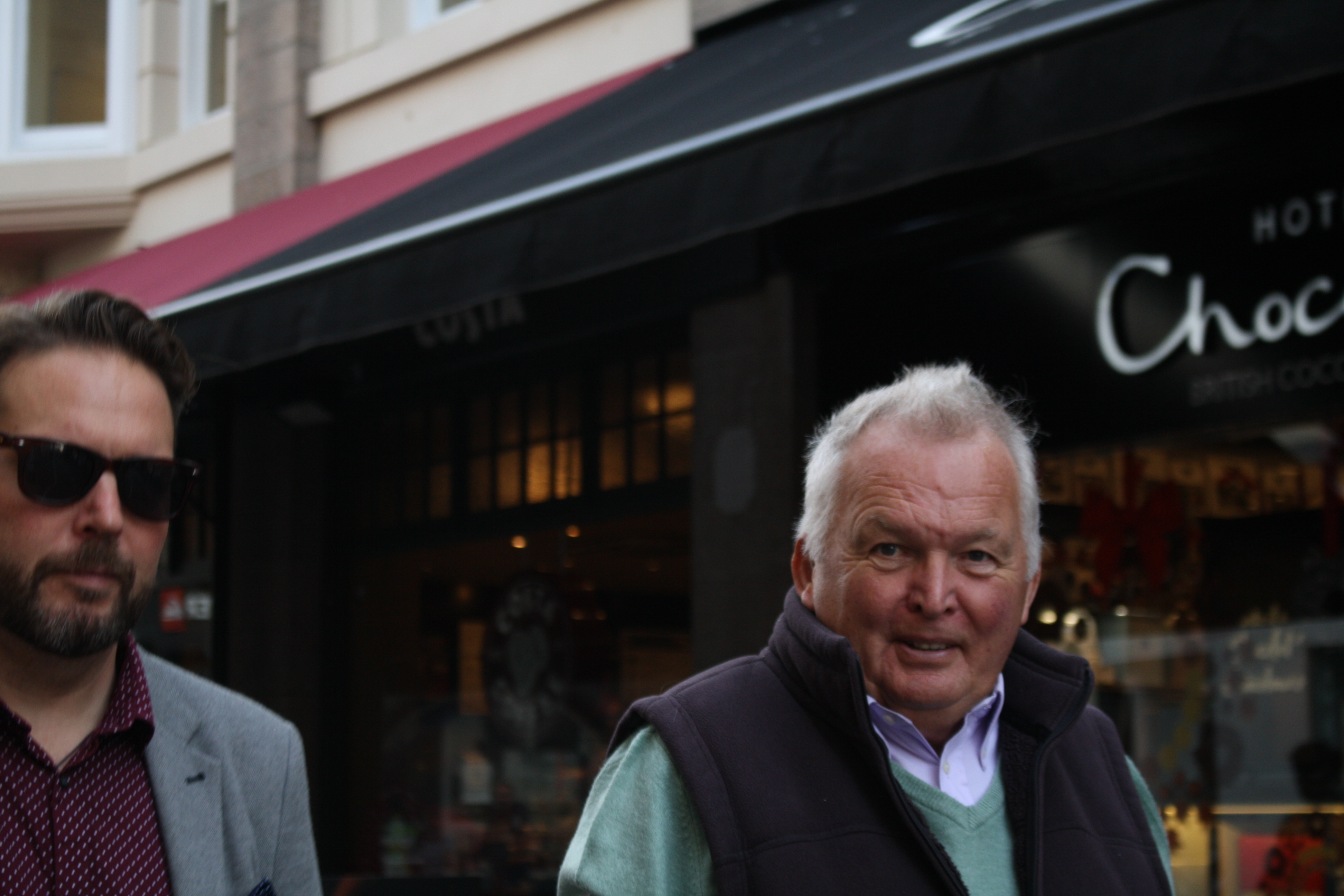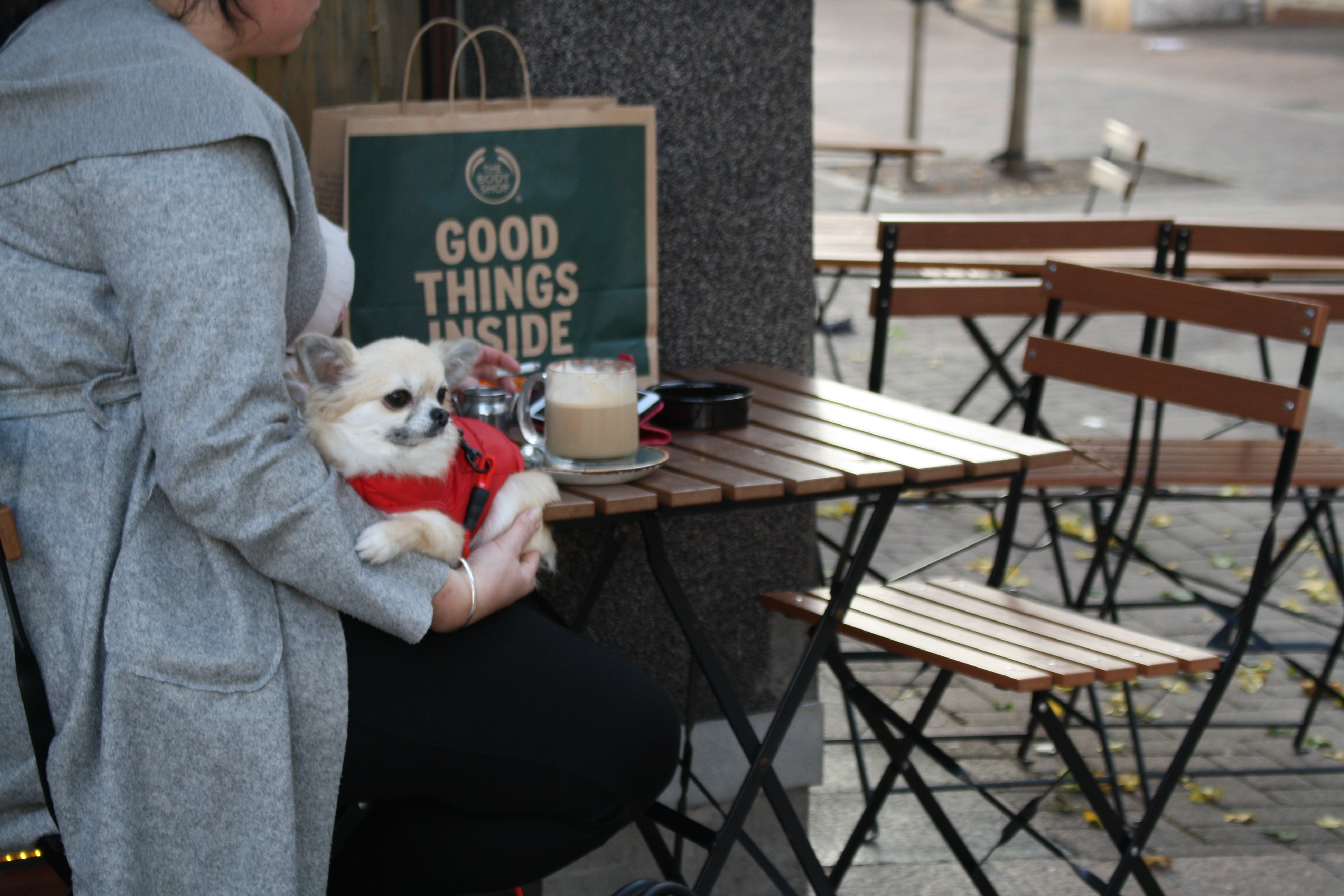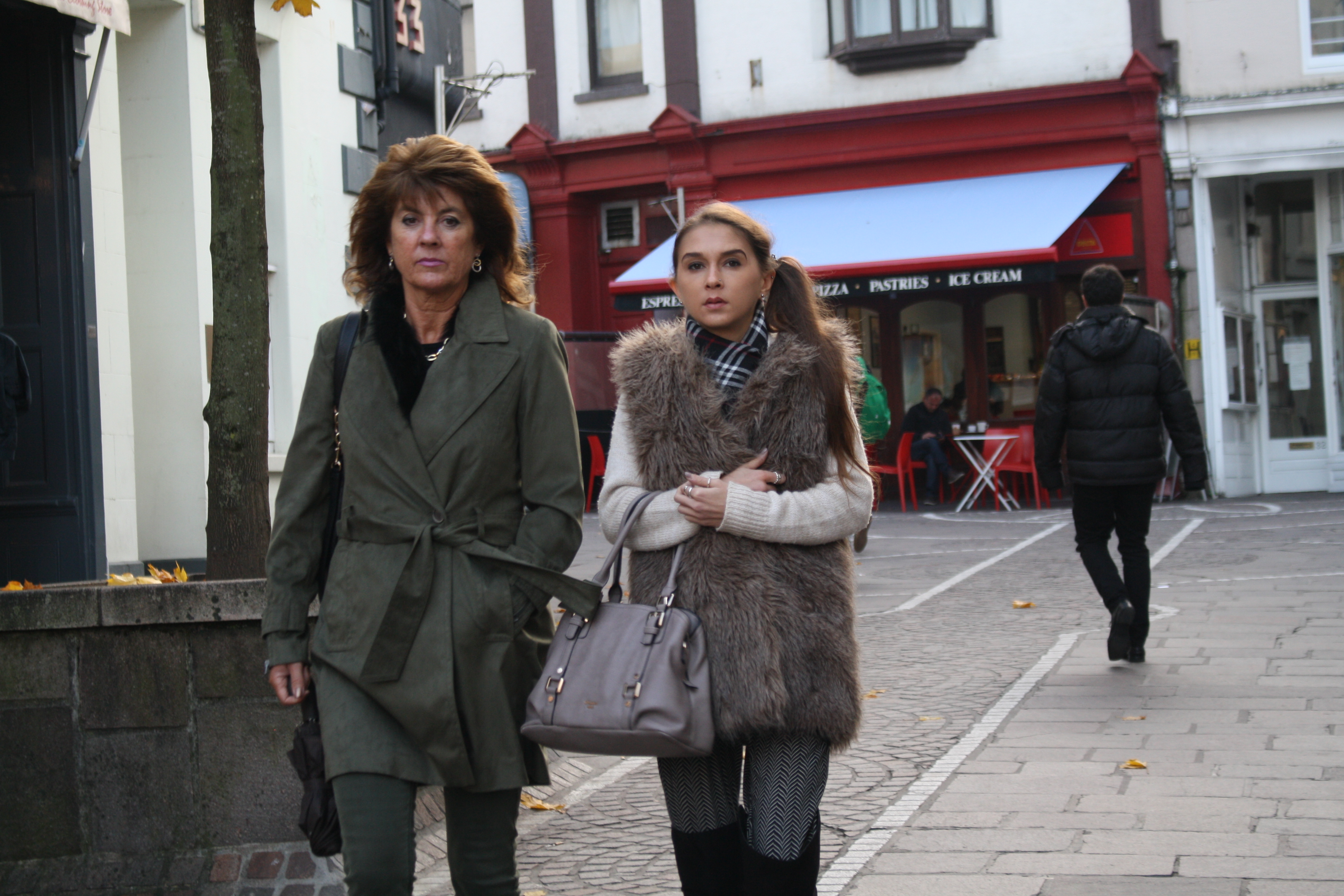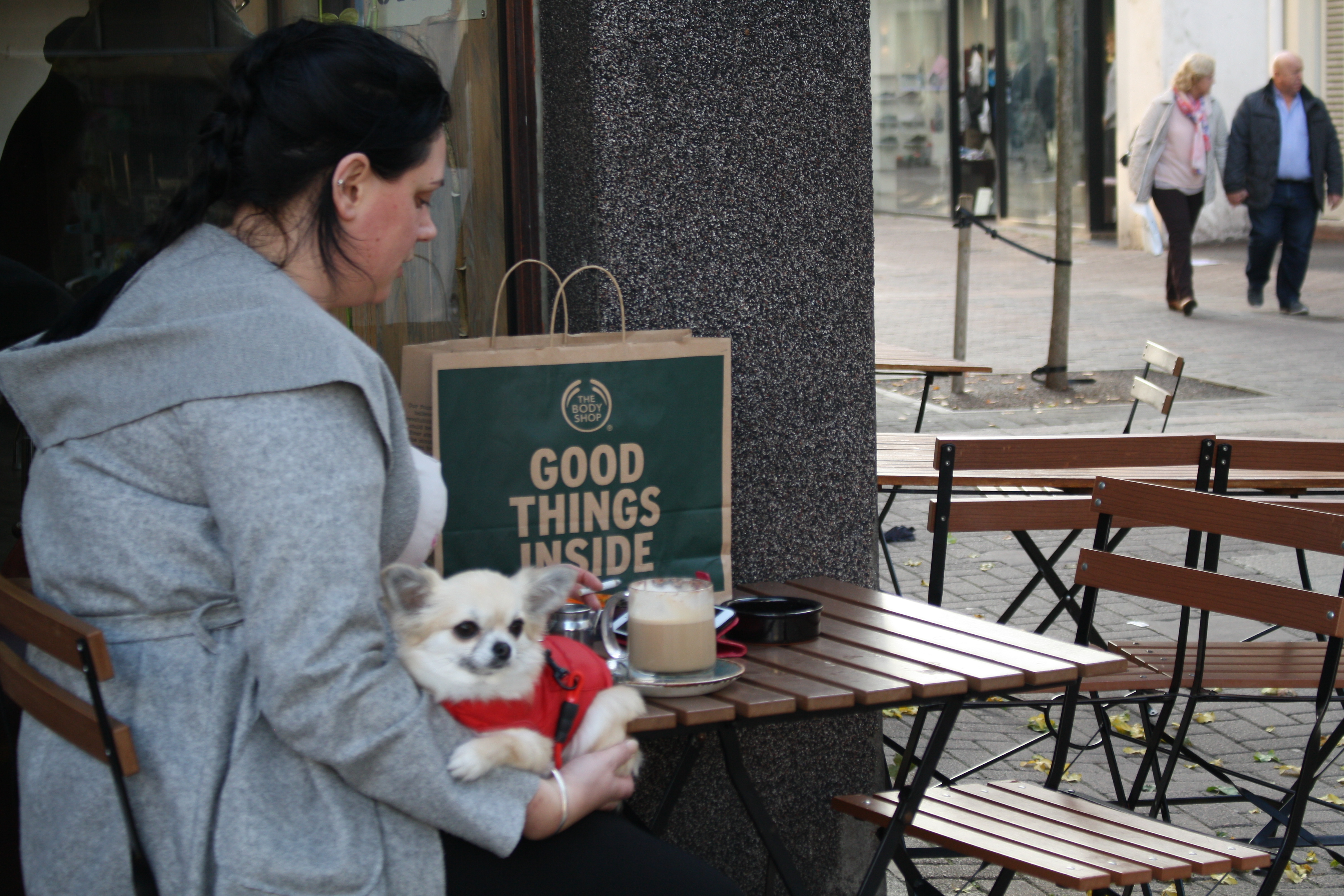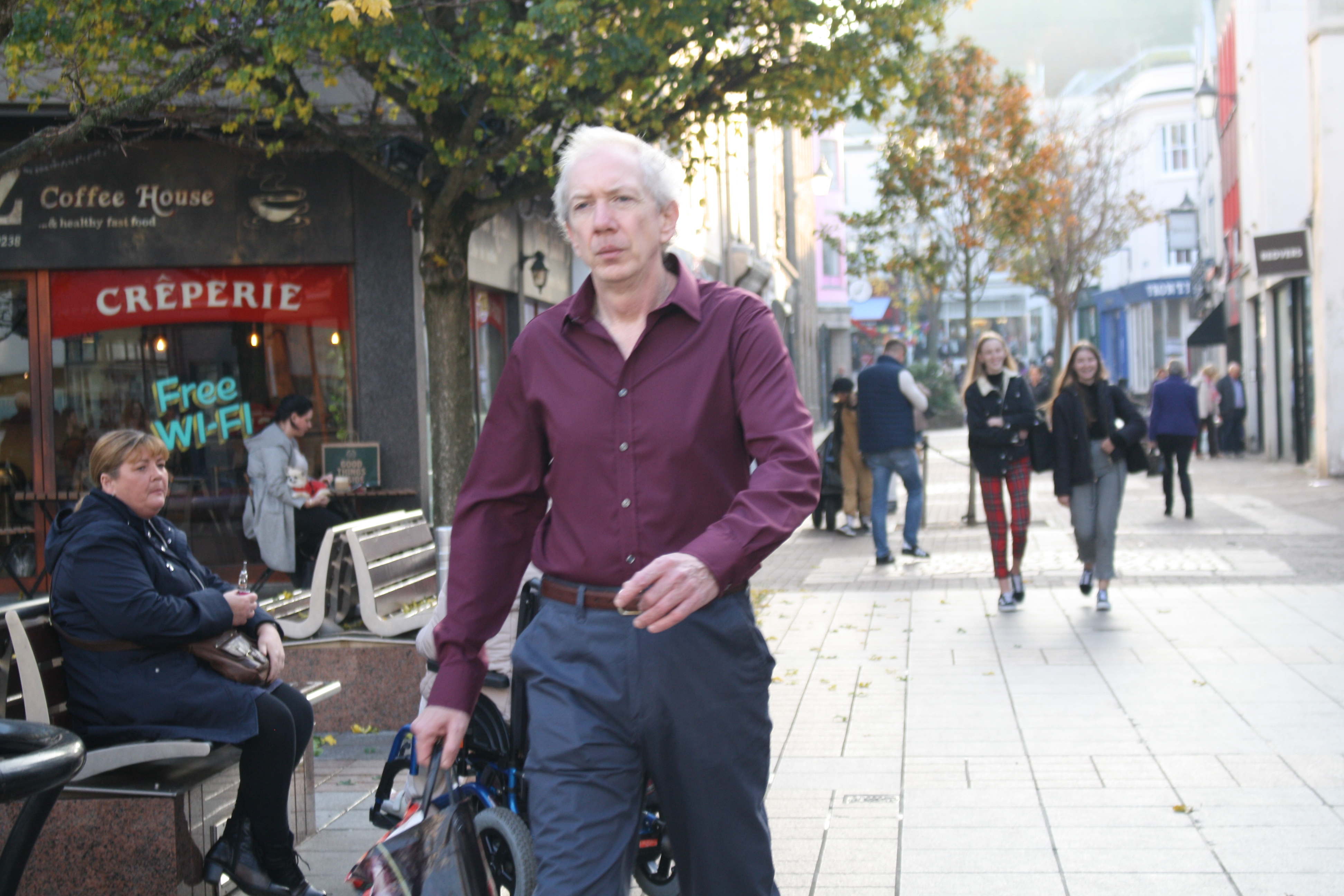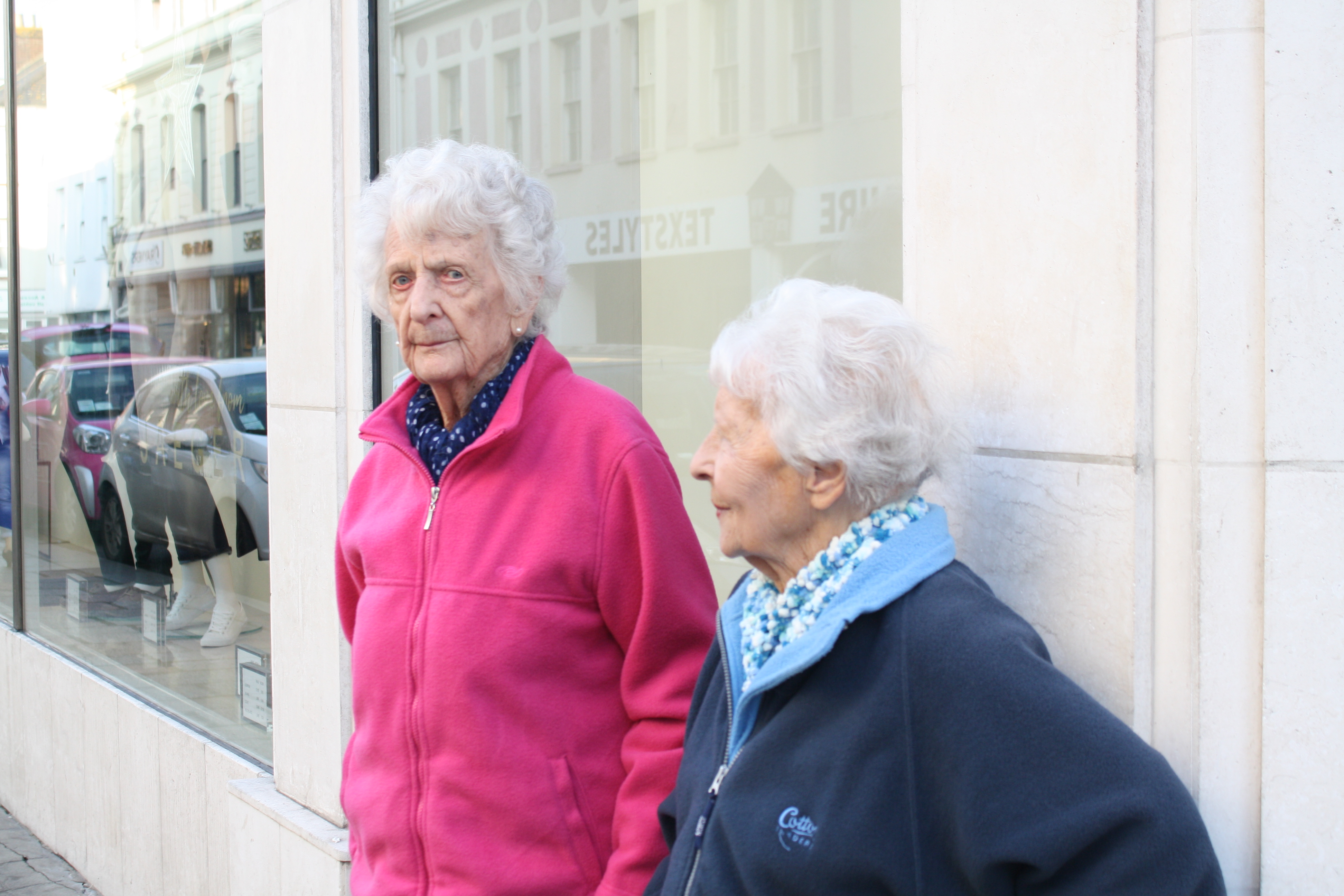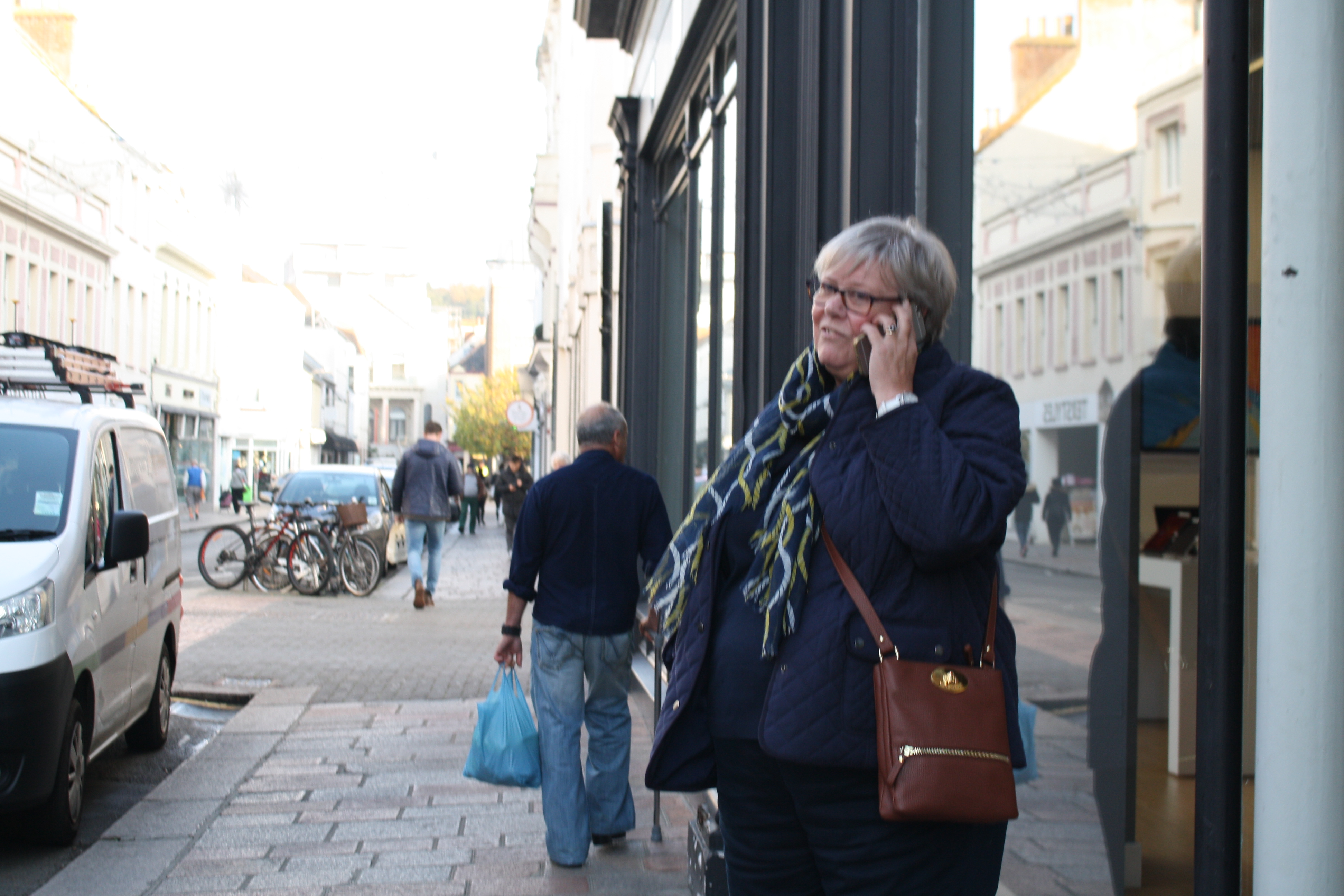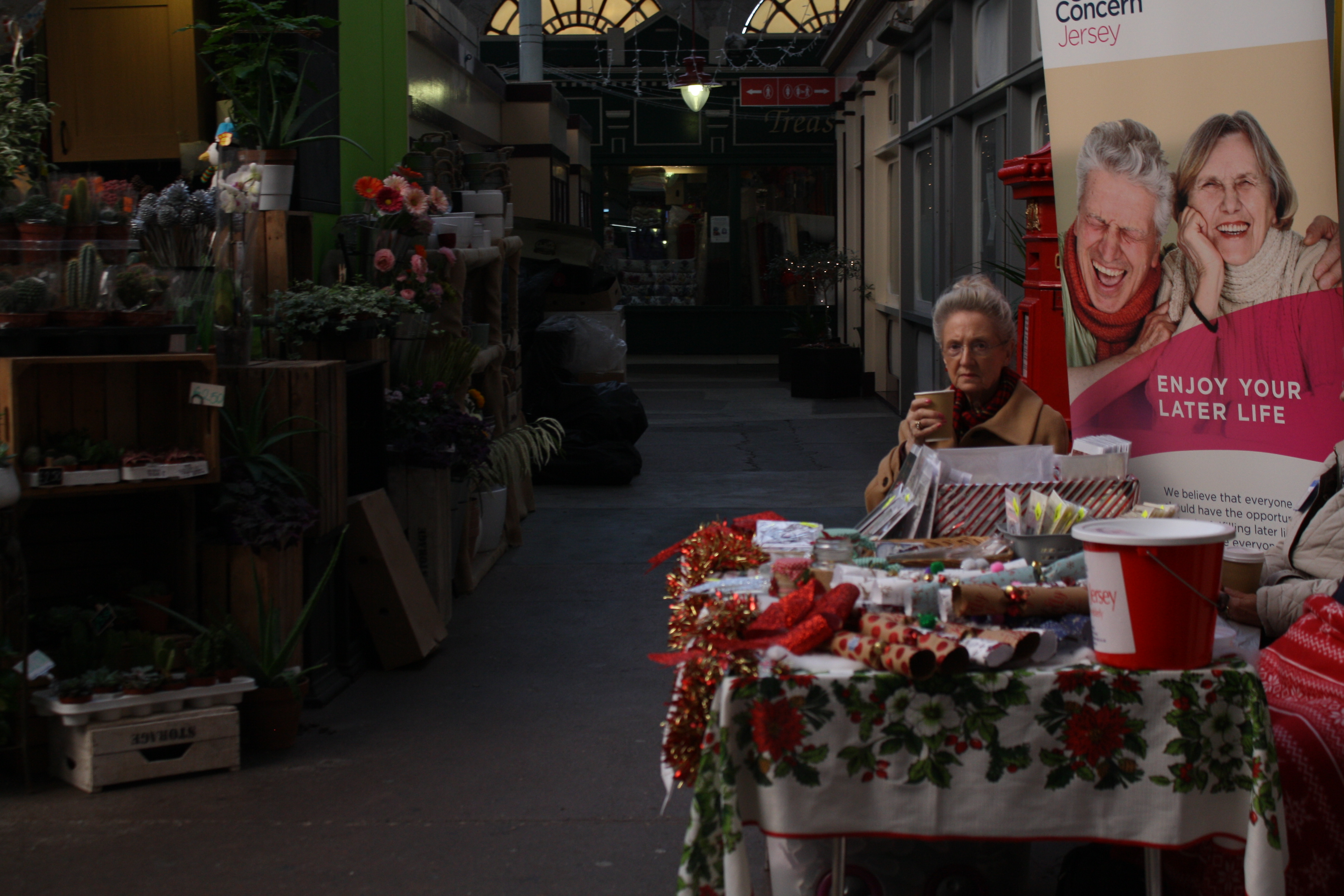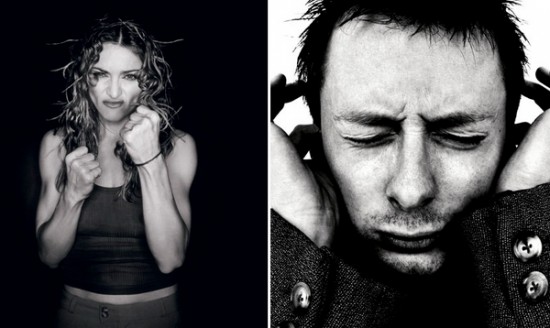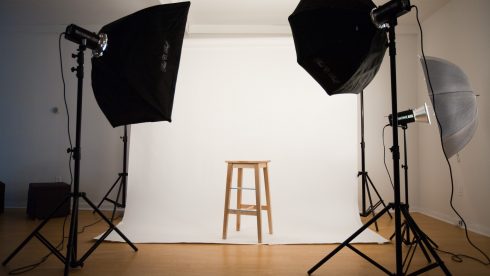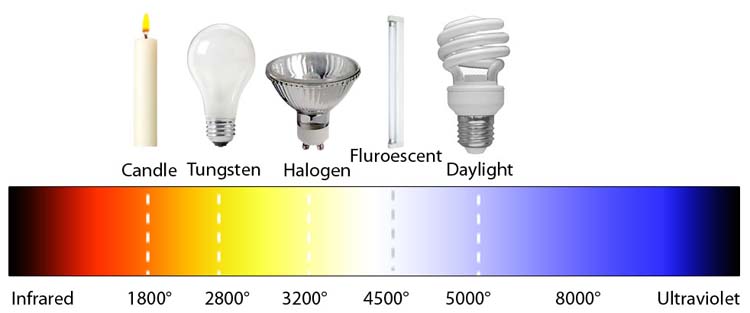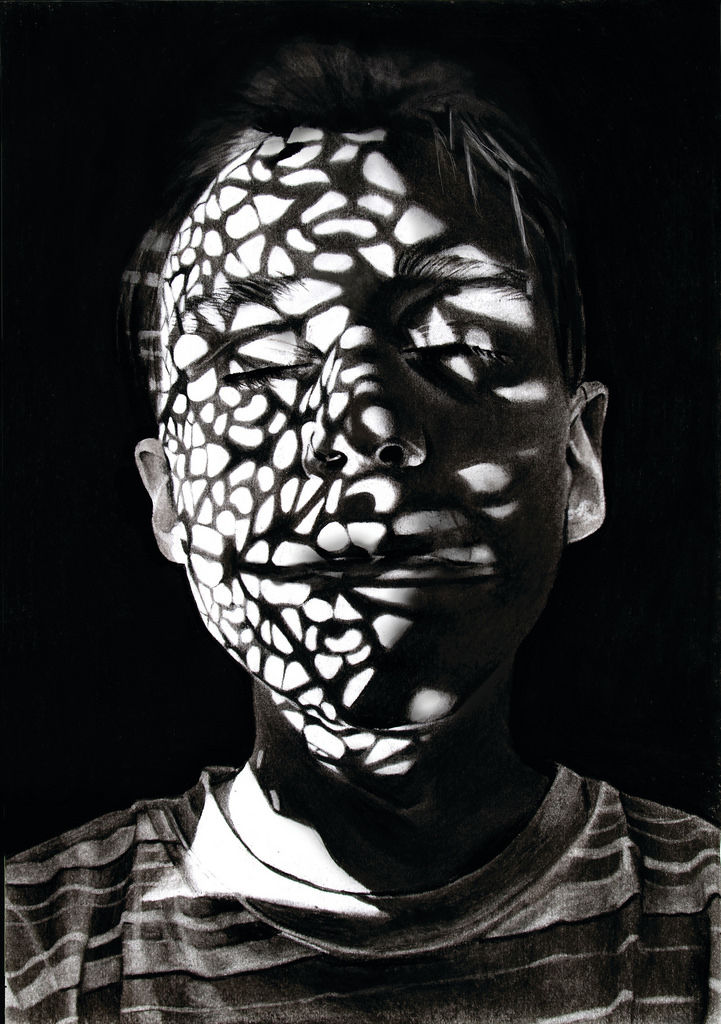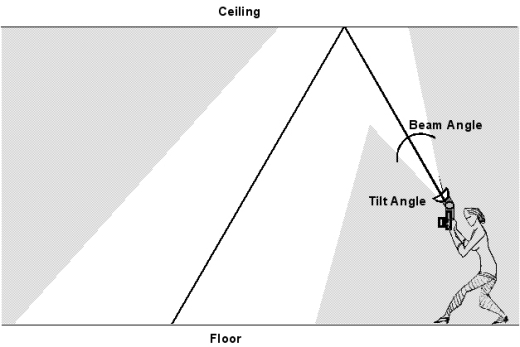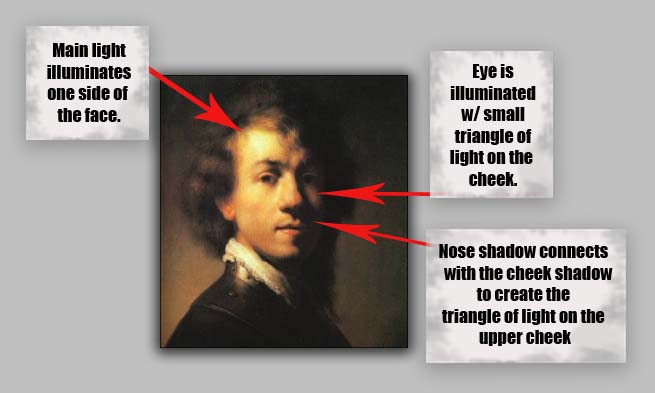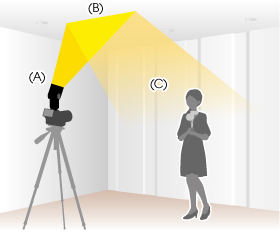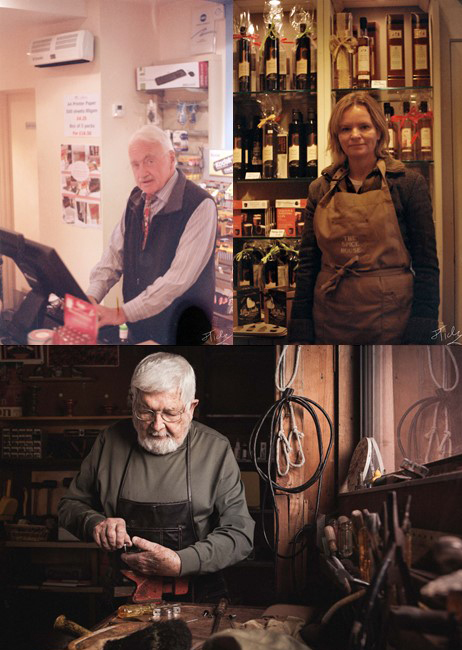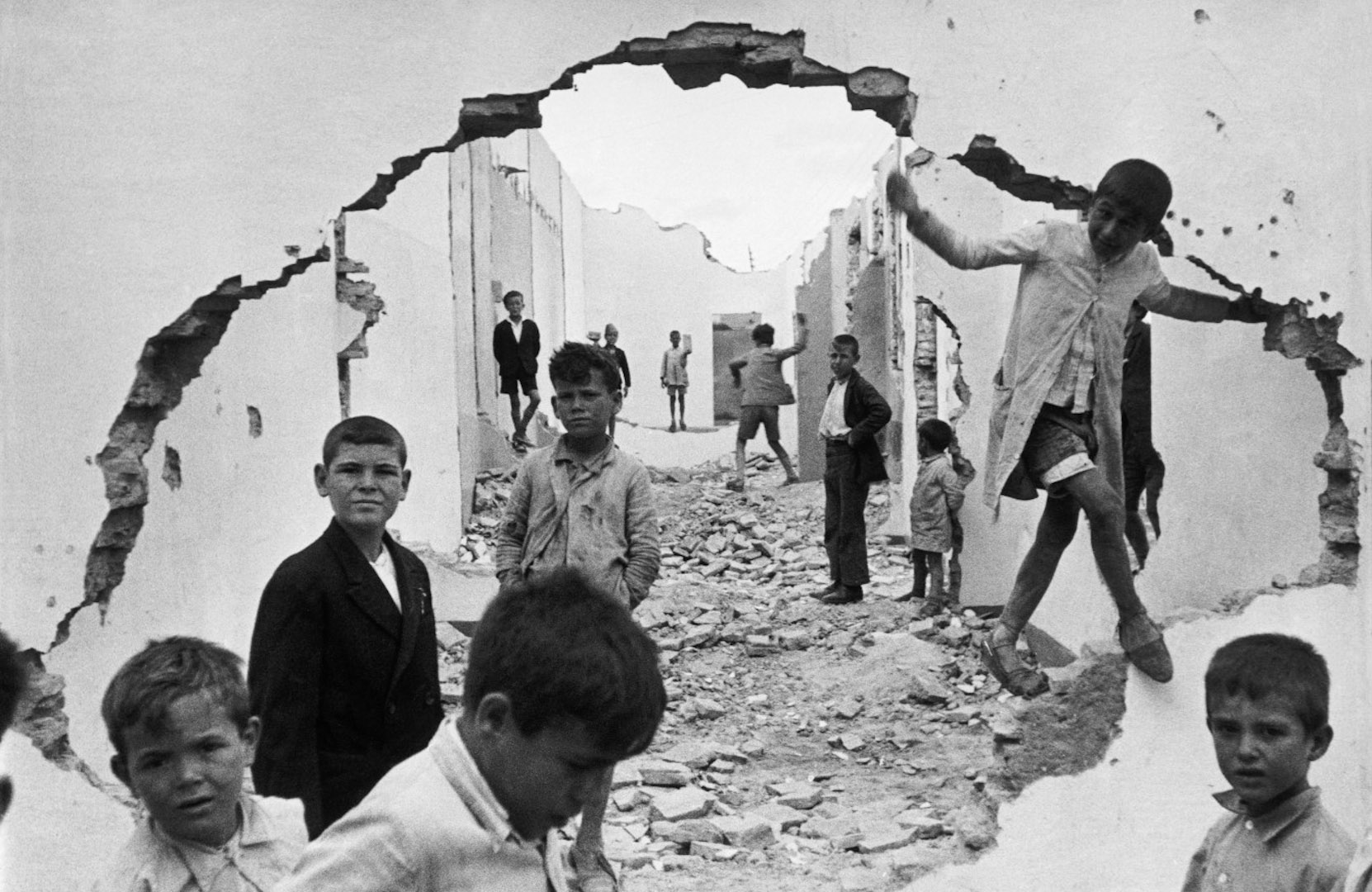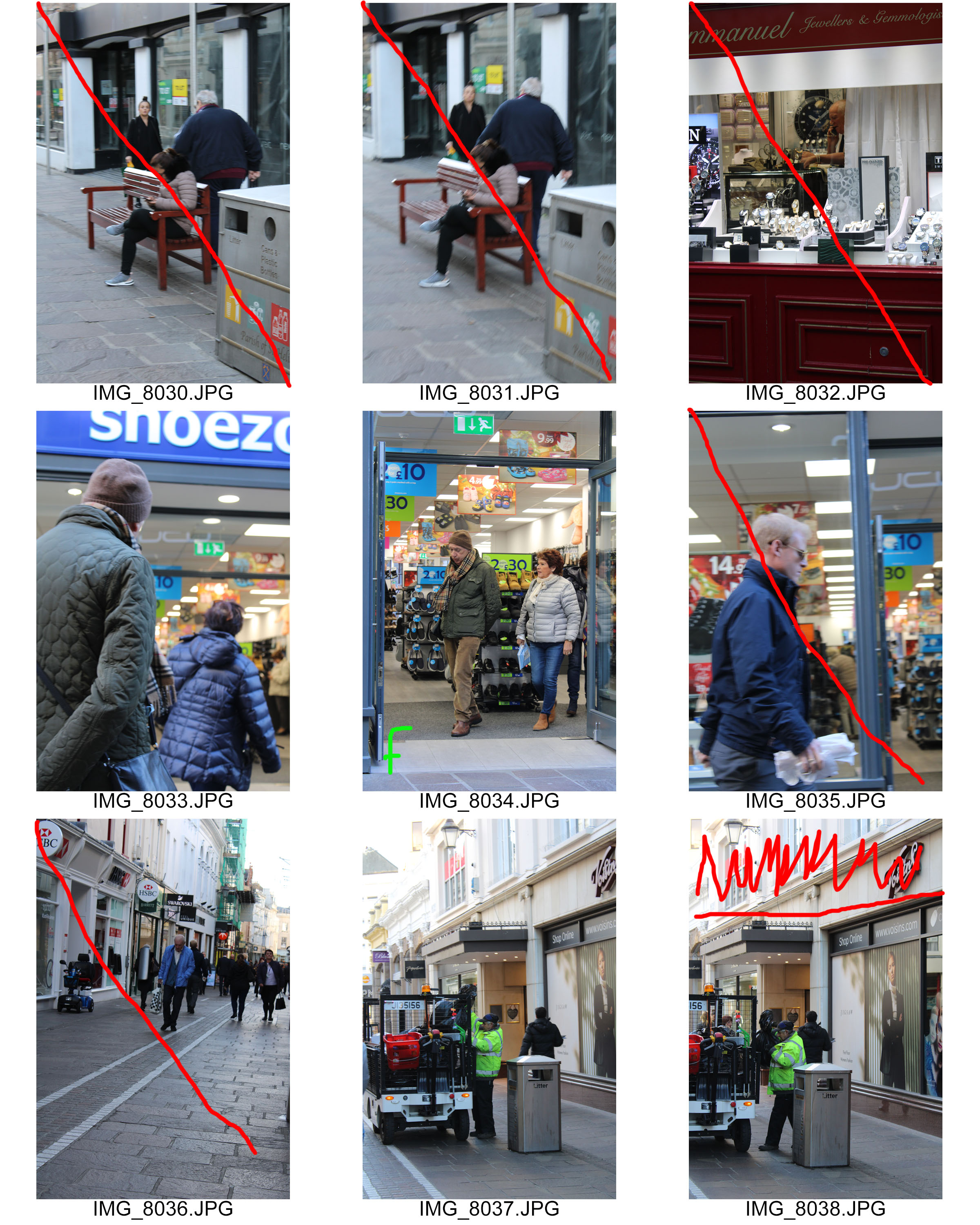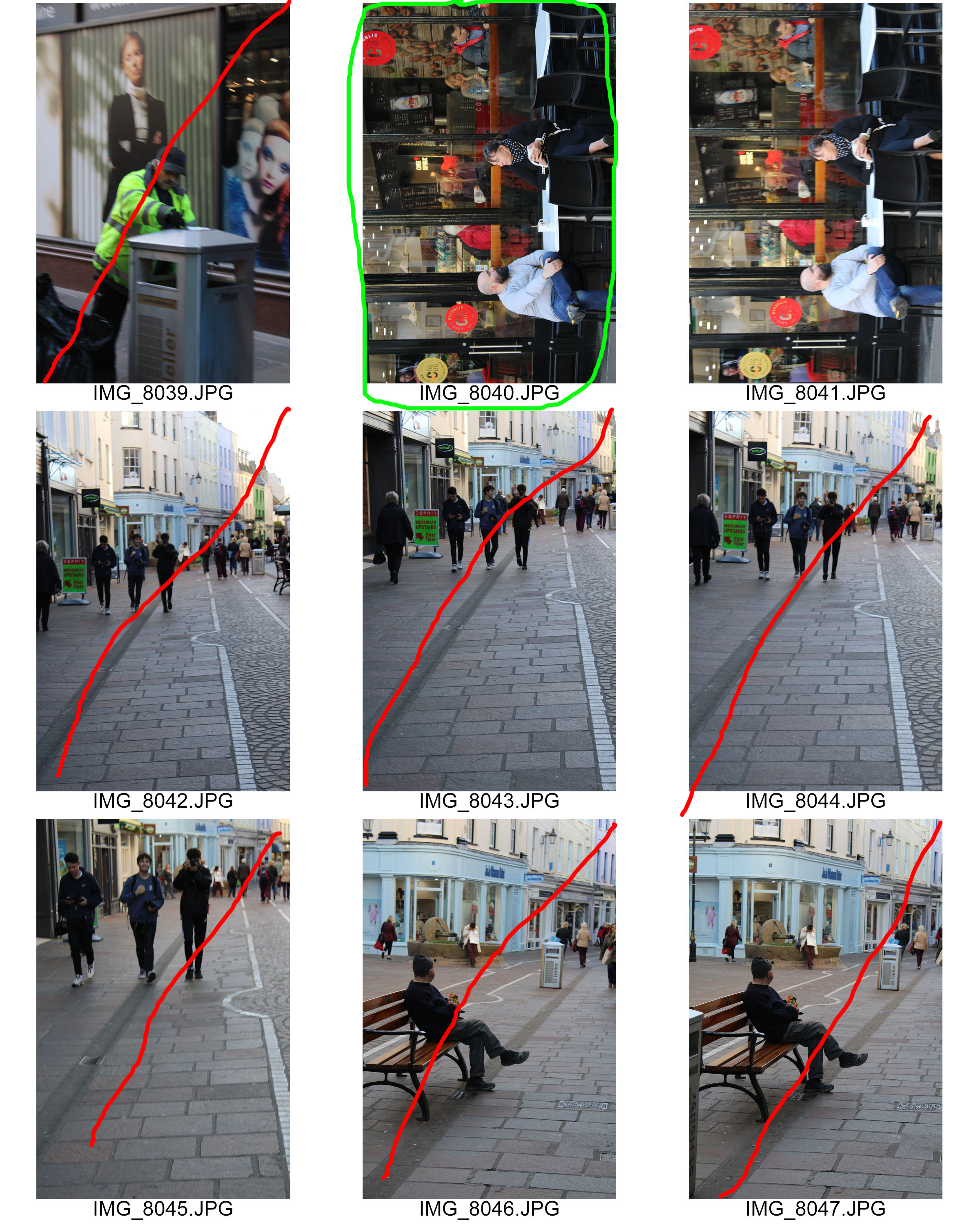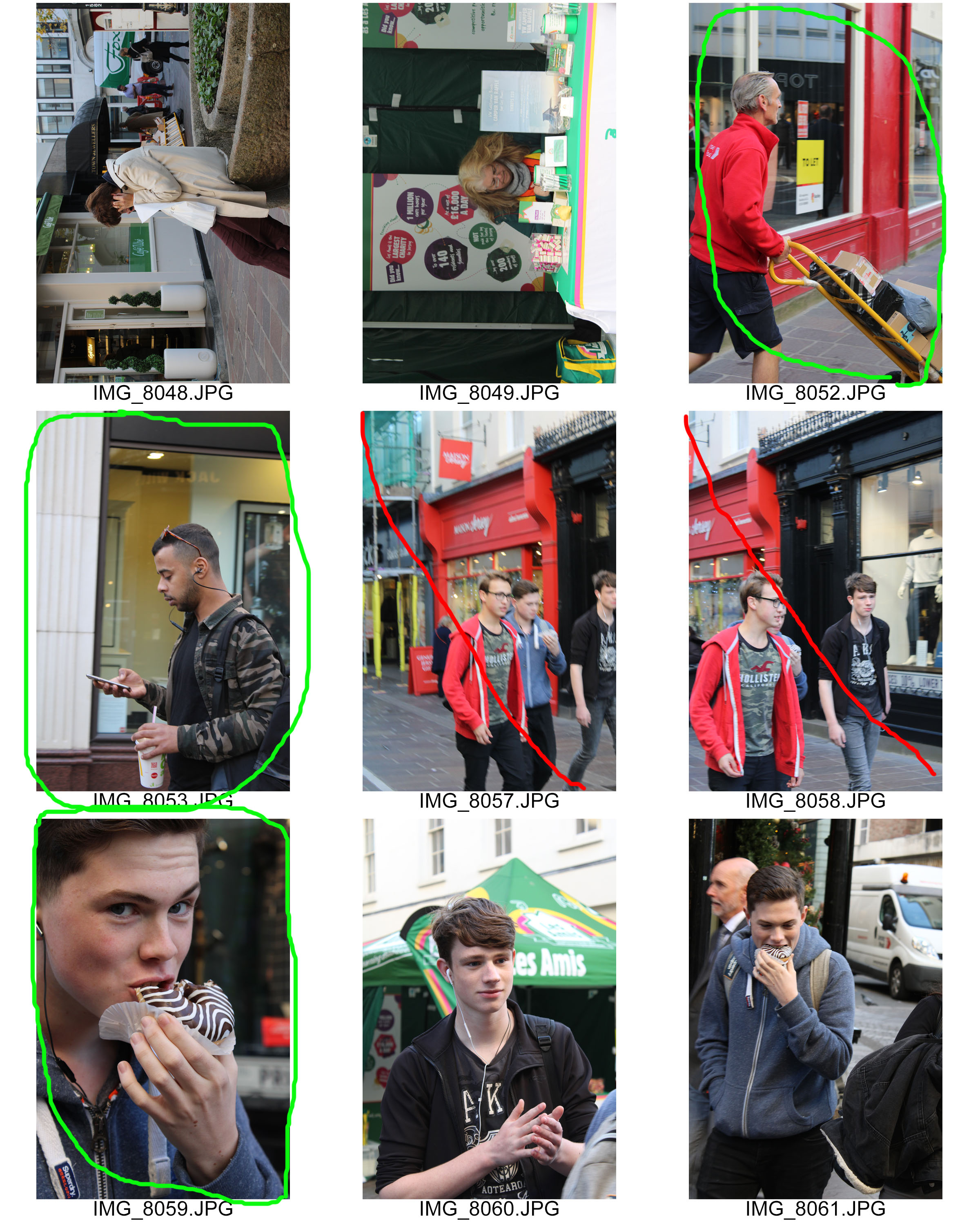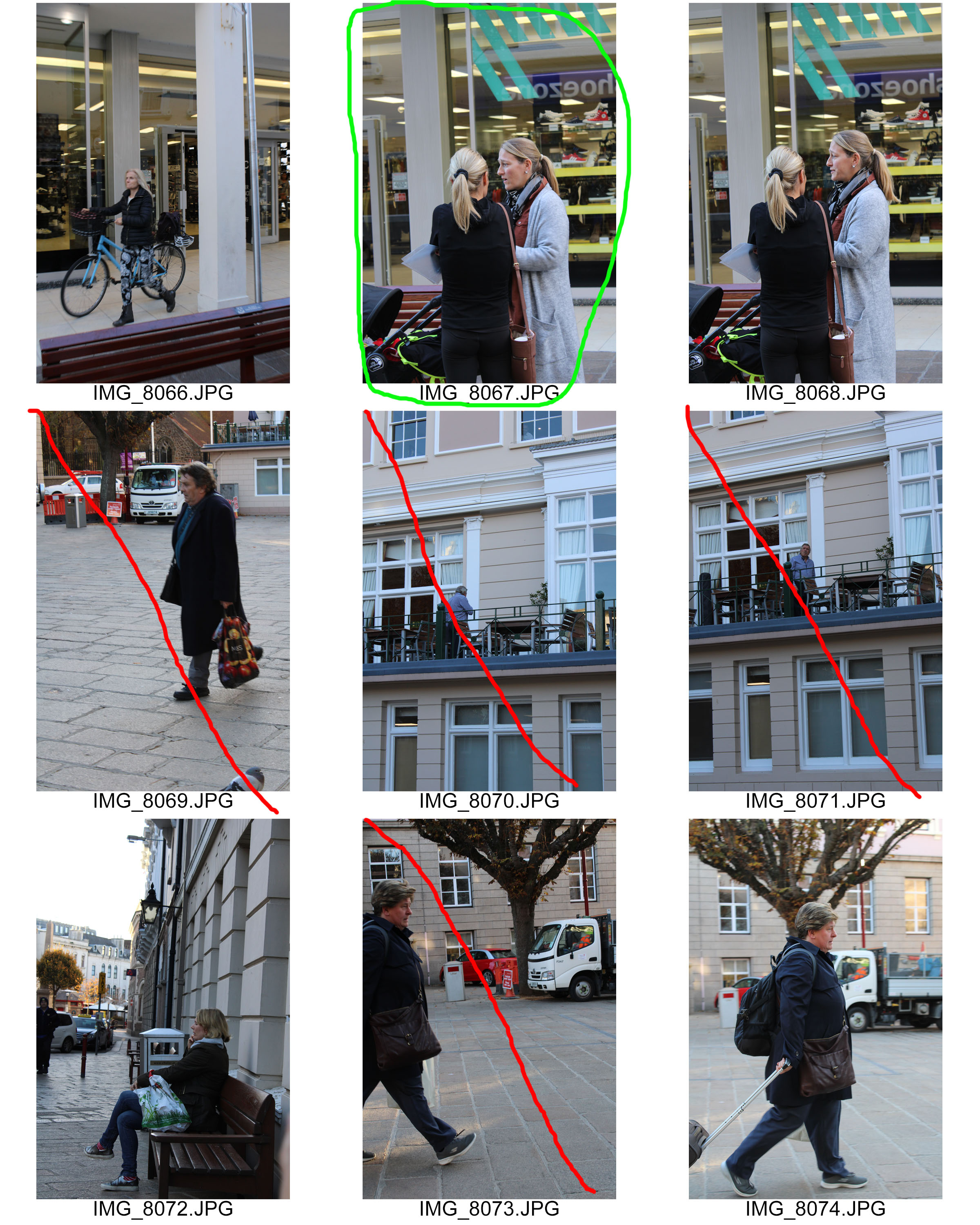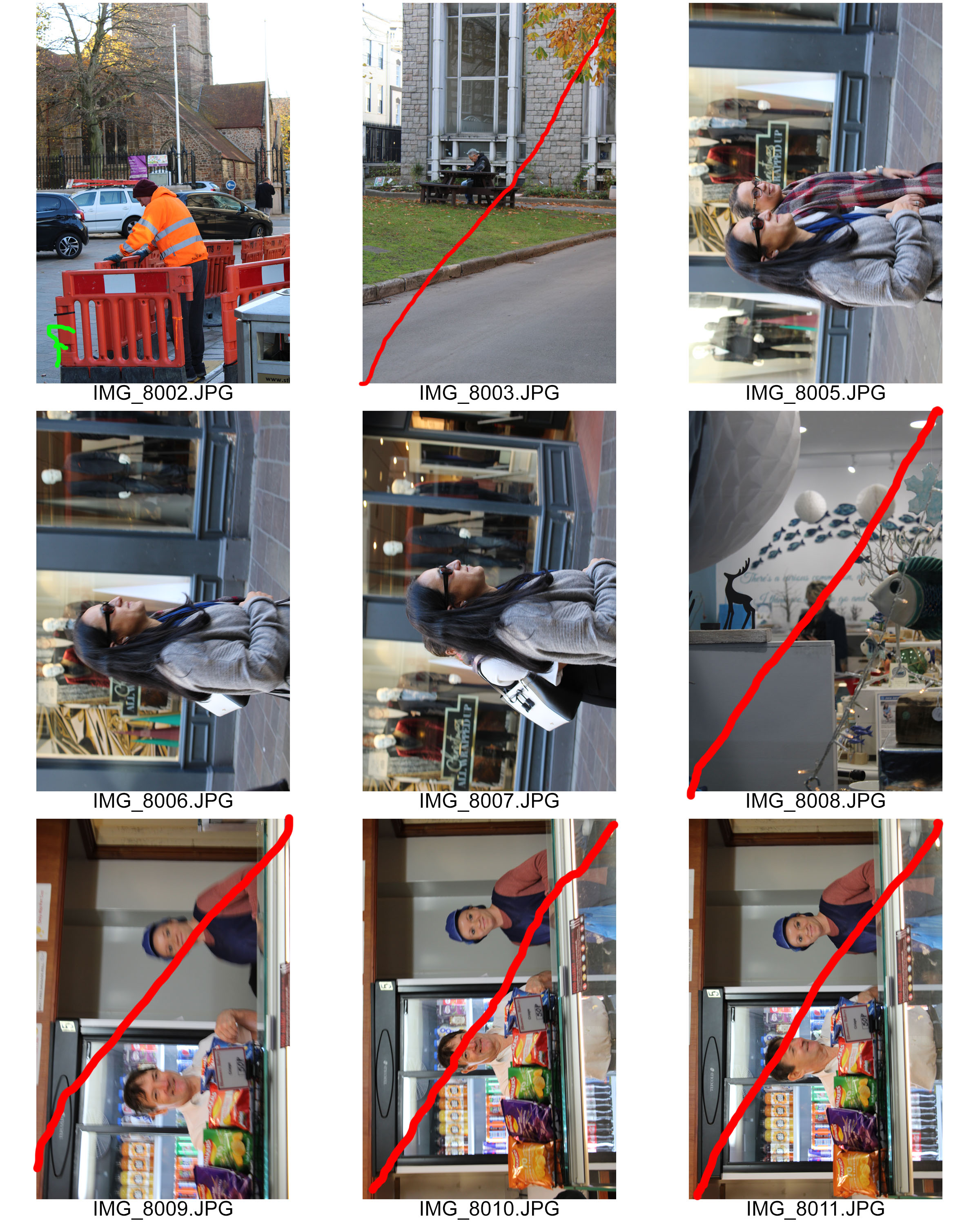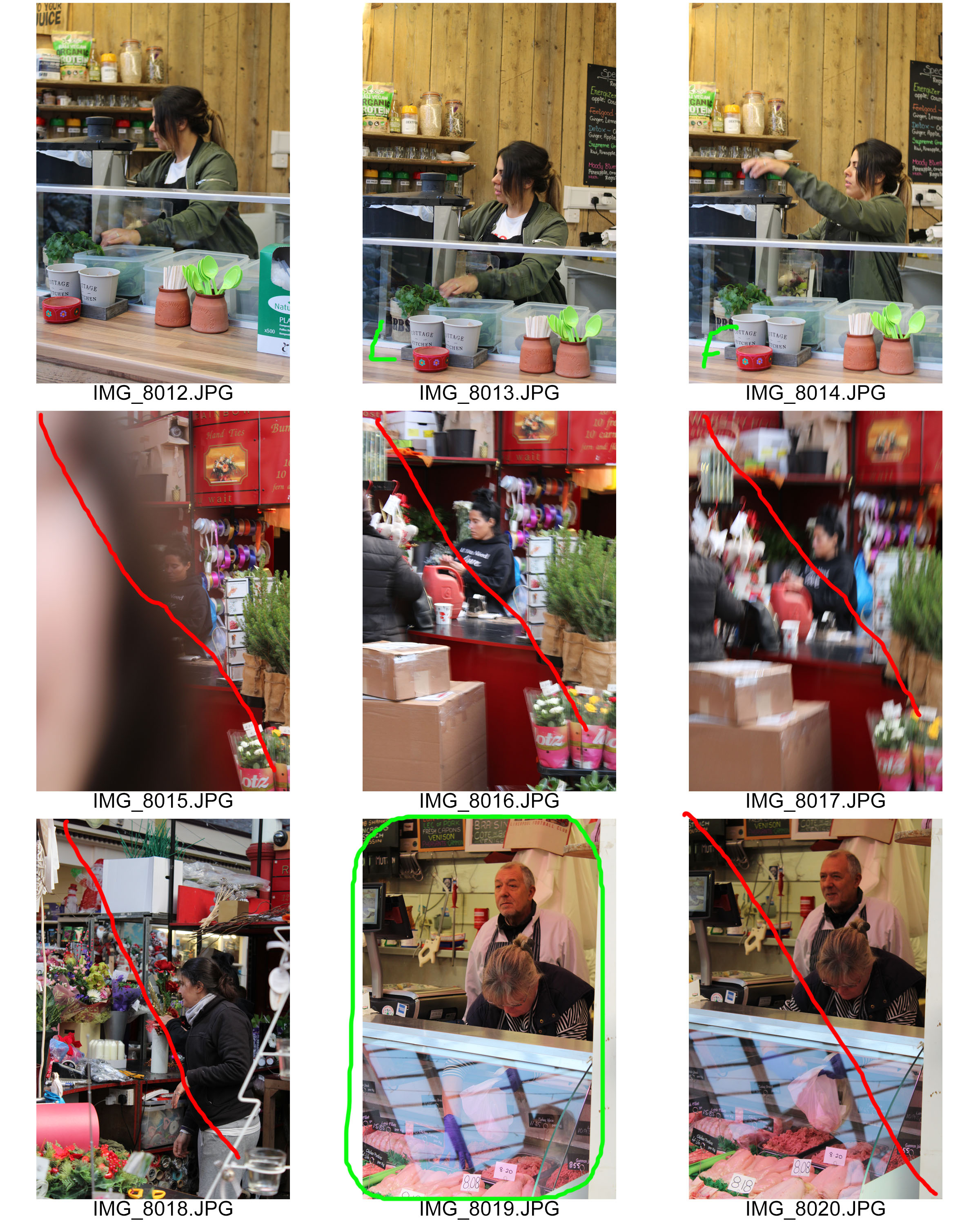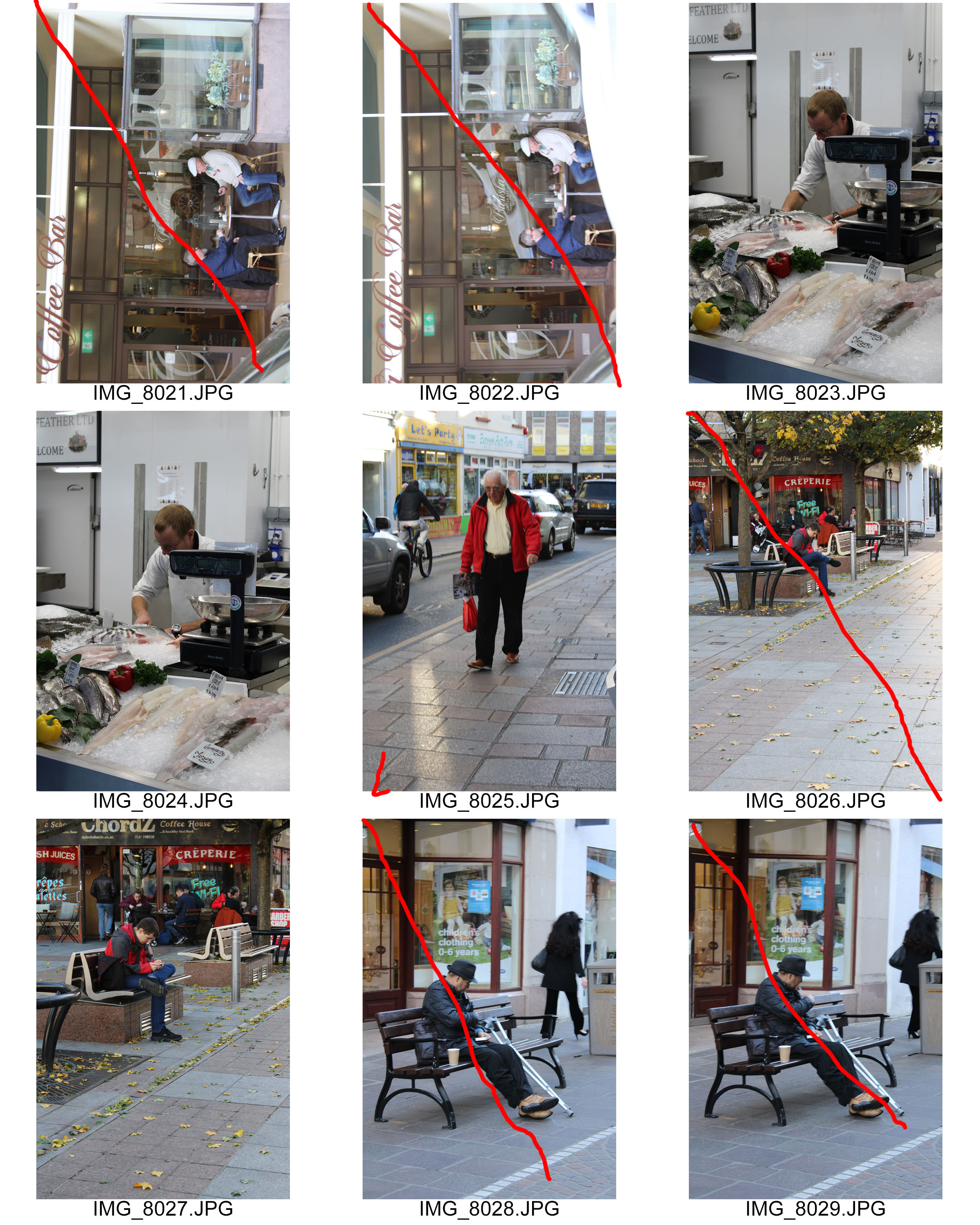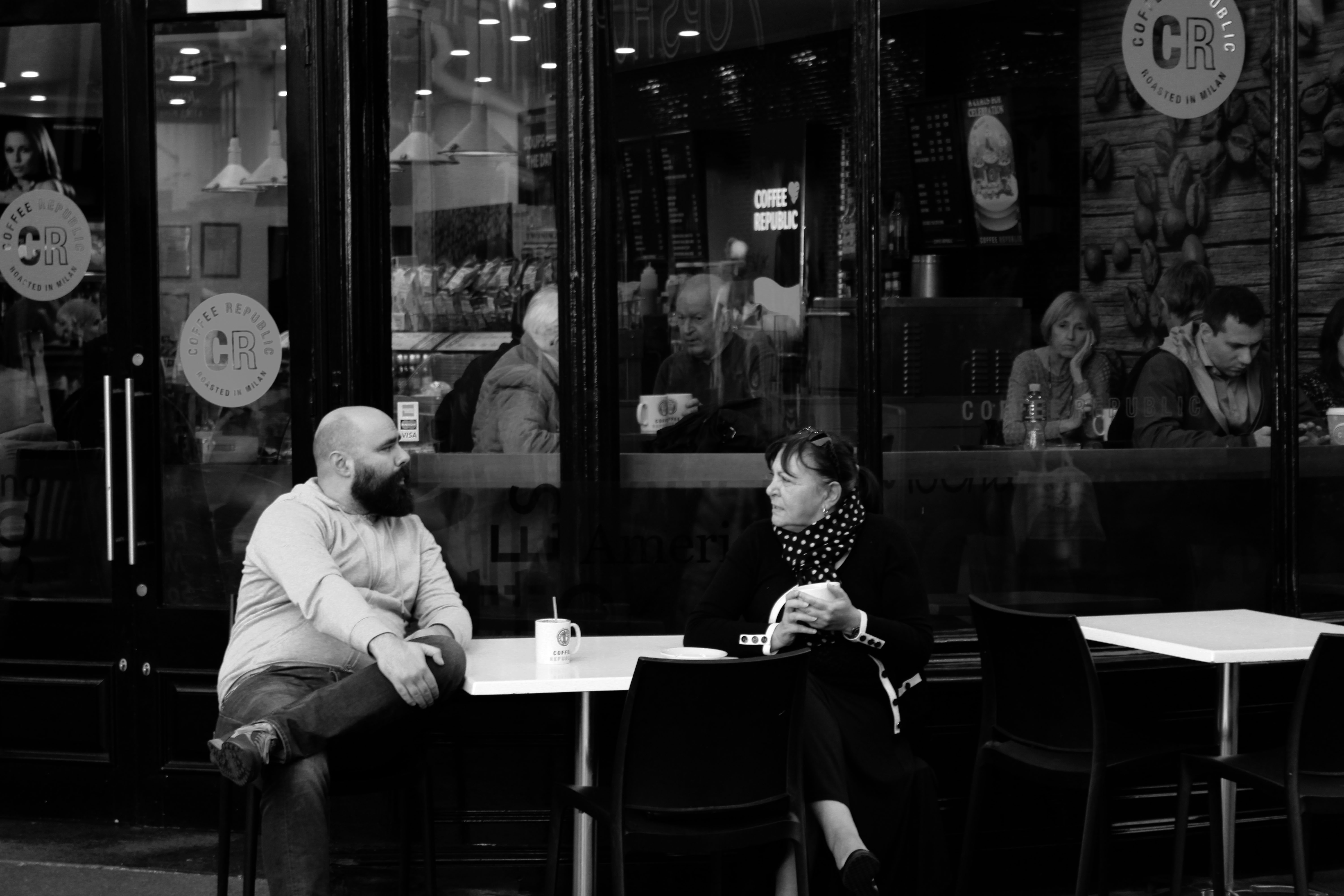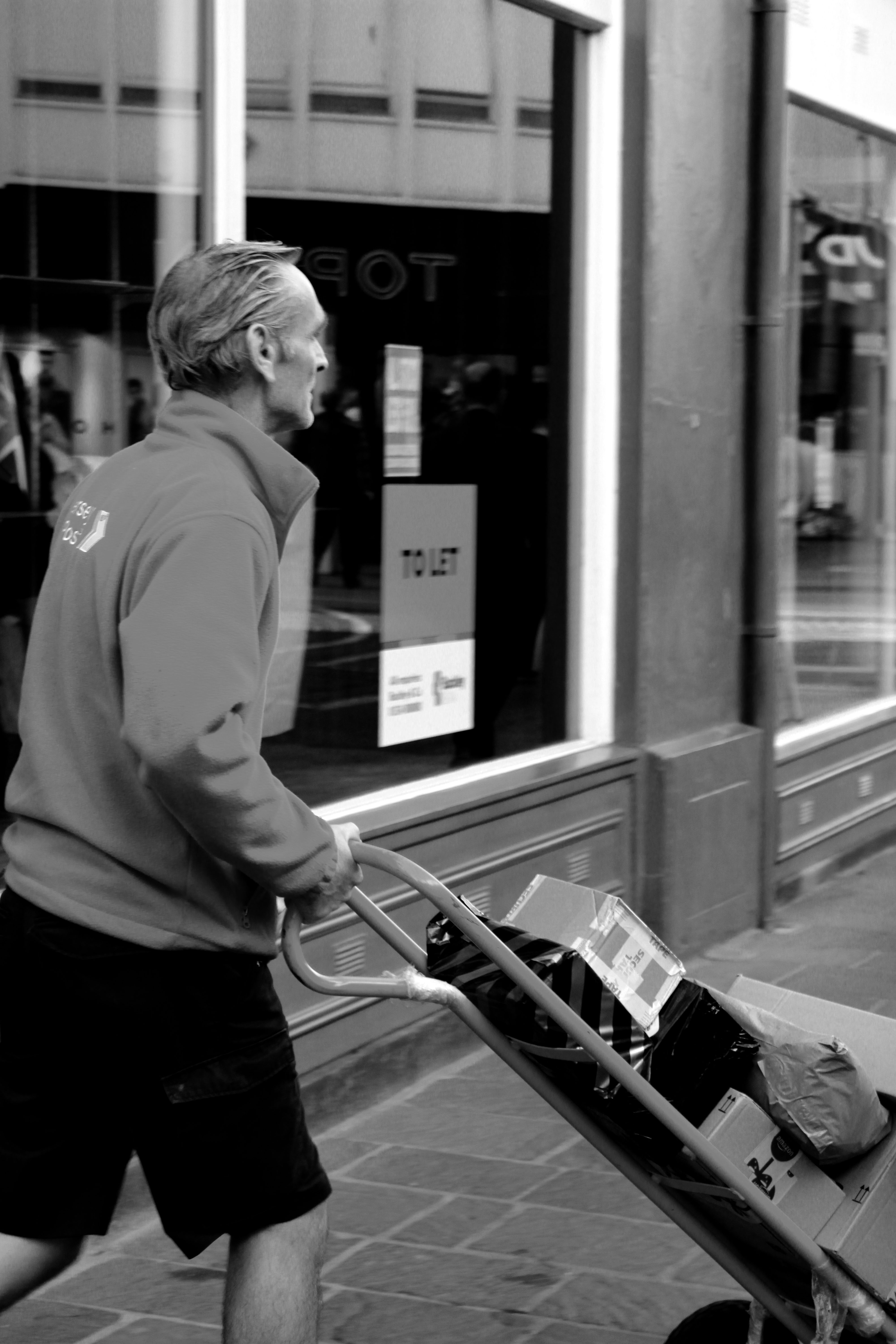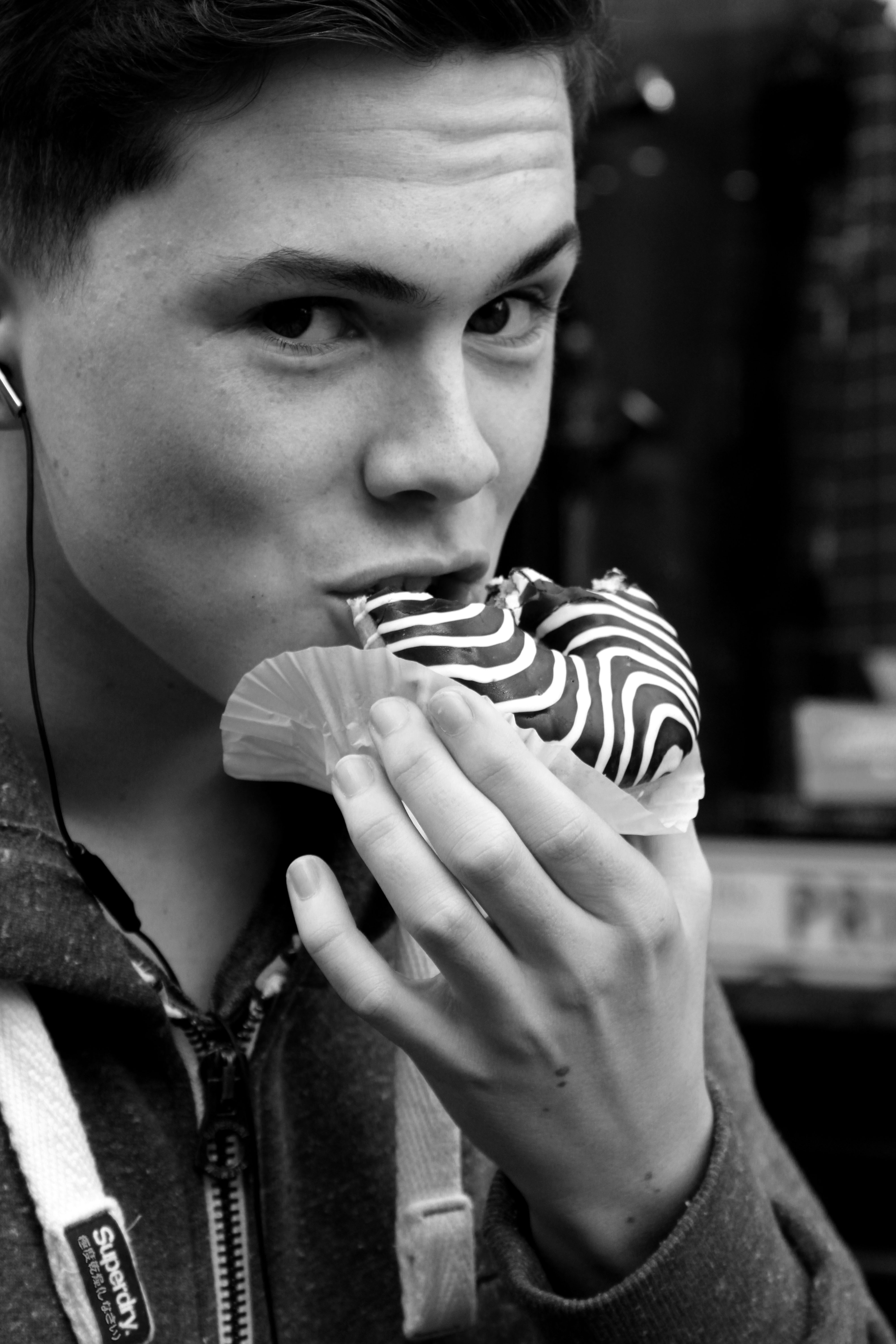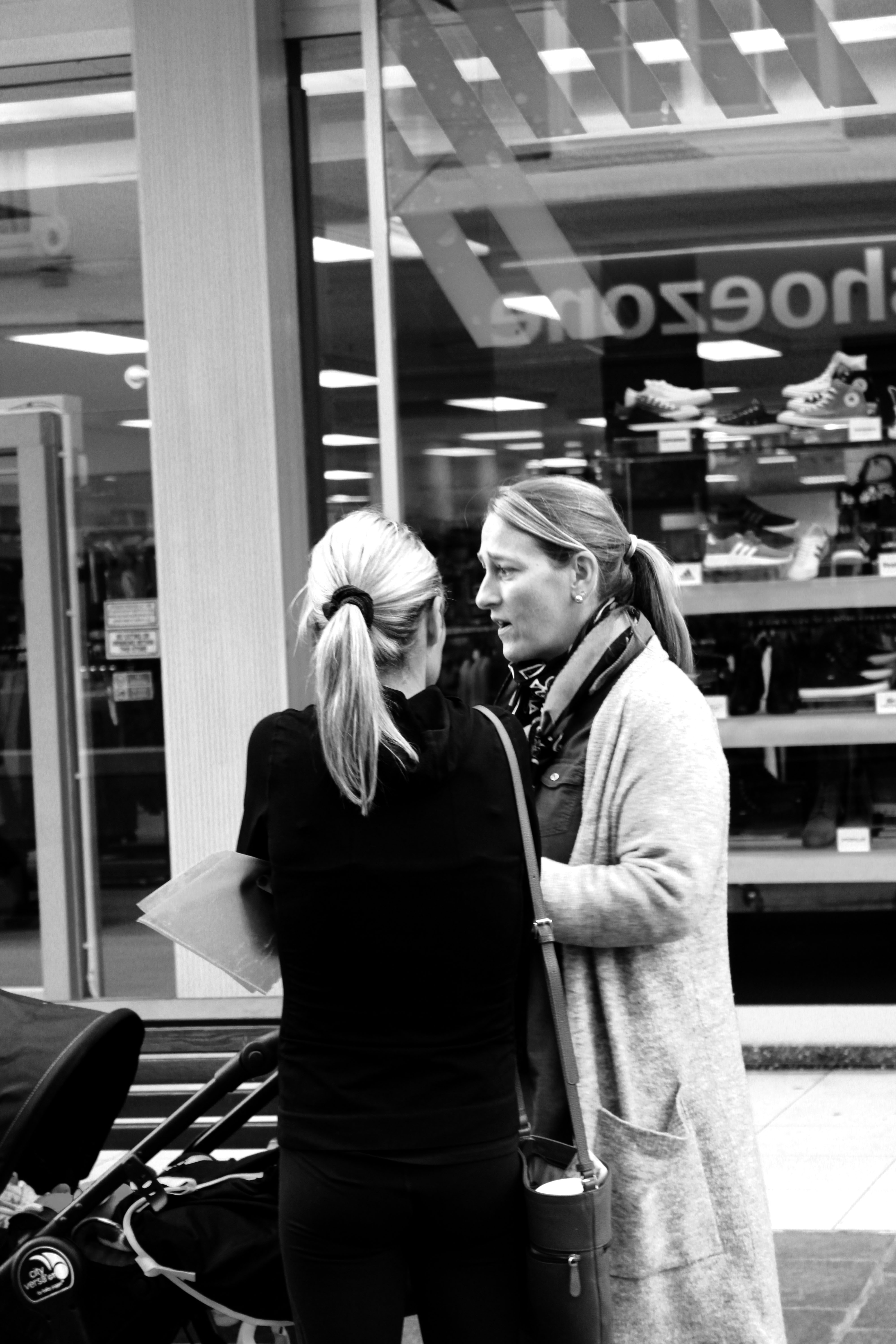Street Photography Photo-shoot
To take these photos I went into the main street in St Helier with our Photography class and just photographed people in the street as they were walking, sitting down or just chatting with someone. At first I was finding it very awkward and quite humiliating as the general population will think it is weird if you’re just walking around taking pictures of people without their permission. I had some good opportunities which I took, some photos turned out pretty well and in focus with the right lighting and some the opposite. However, nearing the end of our time photographing I started finding it easier to just take photos in the street and became more confident around it.
Gallery of All The Photos Taken:
One significant character we encountered whilst taking these photos was this homeless man. He approached our group as we were finishing off by just talking about our experiences, etc. He photographed very well and had very unique clothes on, also the fact he was smoking a cigarette made the photos even more interesting. Unfortunately when we all had a great opportunity to take an interesting photo (with the person looking directly into the camera and not moving), my camera wasn’t in the right setting so my photos of him didn’t turn out as well as they could have.
Thankfully after finishing, my friend and I saw him again on the street, this time I wanted to take more photos. We both asked him for photos and he agreed, I started up a conversation with the man to learn more about him and he told us about his homelessness, that he is a Jersey man but moved to Southampton, then returned to Jersey in the 70s. He also said he wants to leave Jersey but cannot, I asked why and he told me “he has a bad name”, I found this interesting but didn’t want to dig any further as he came across very bizarre and quite intimidating/dodgy at times.
My Favourite Photos
Edited into black and white as I prefer it to colour, as I think it looks better, some have also been cropped.
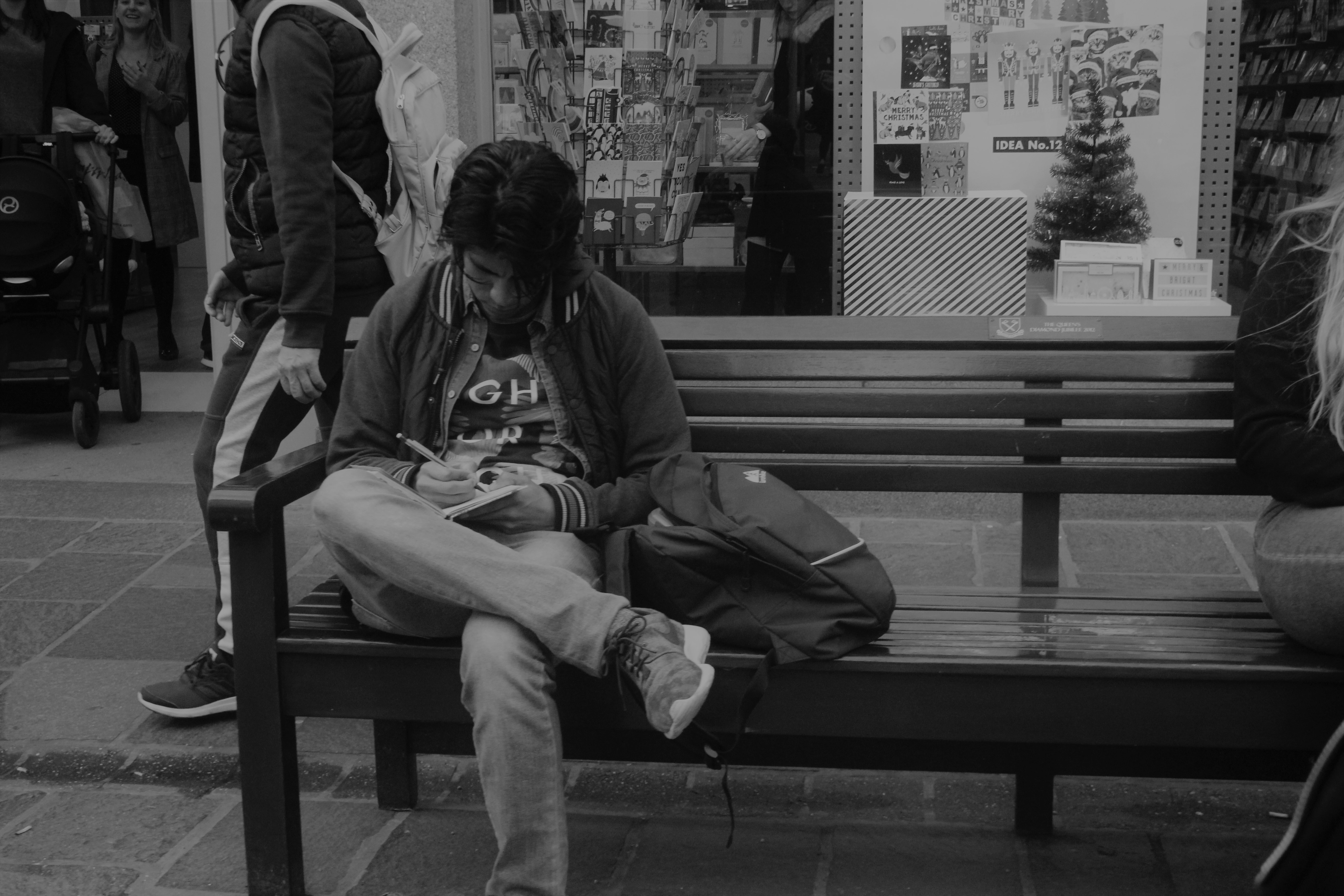 This is one of my favourites as he seems to be very disconnected to the world around him and just drawing/noting things down in his notebook.
This is one of my favourites as he seems to be very disconnected to the world around him and just drawing/noting things down in his notebook. This one really reminds me of Dougie Wallace’s Work, as the women look wealthy especially due to their handbags and fur coats. Also their facial expressions seem to be disapproving and snobby in a way.
This one really reminds me of Dougie Wallace’s Work, as the women look wealthy especially due to their handbags and fur coats. Also their facial expressions seem to be disapproving and snobby in a way.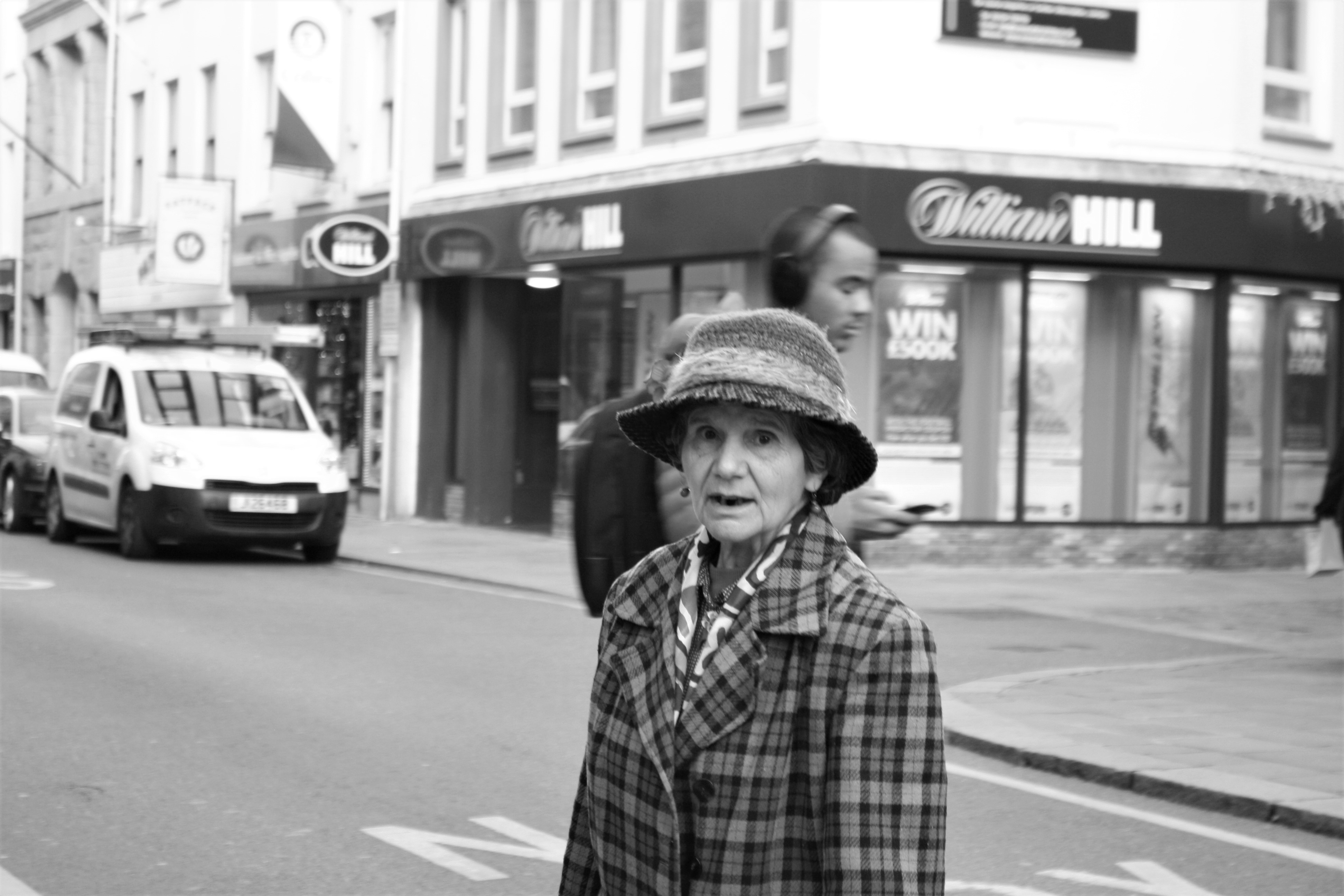 I found this woman’s facial expression’s and clothing interesting. She was also singing to herself as she walking down the street. I had to follow her for a couple minutes to get a good shot as she walked quite fast and didn’t look at the camera at all.
I found this woman’s facial expression’s and clothing interesting. She was also singing to herself as she walking down the street. I had to follow her for a couple minutes to get a good shot as she walked quite fast and didn’t look at the camera at all. 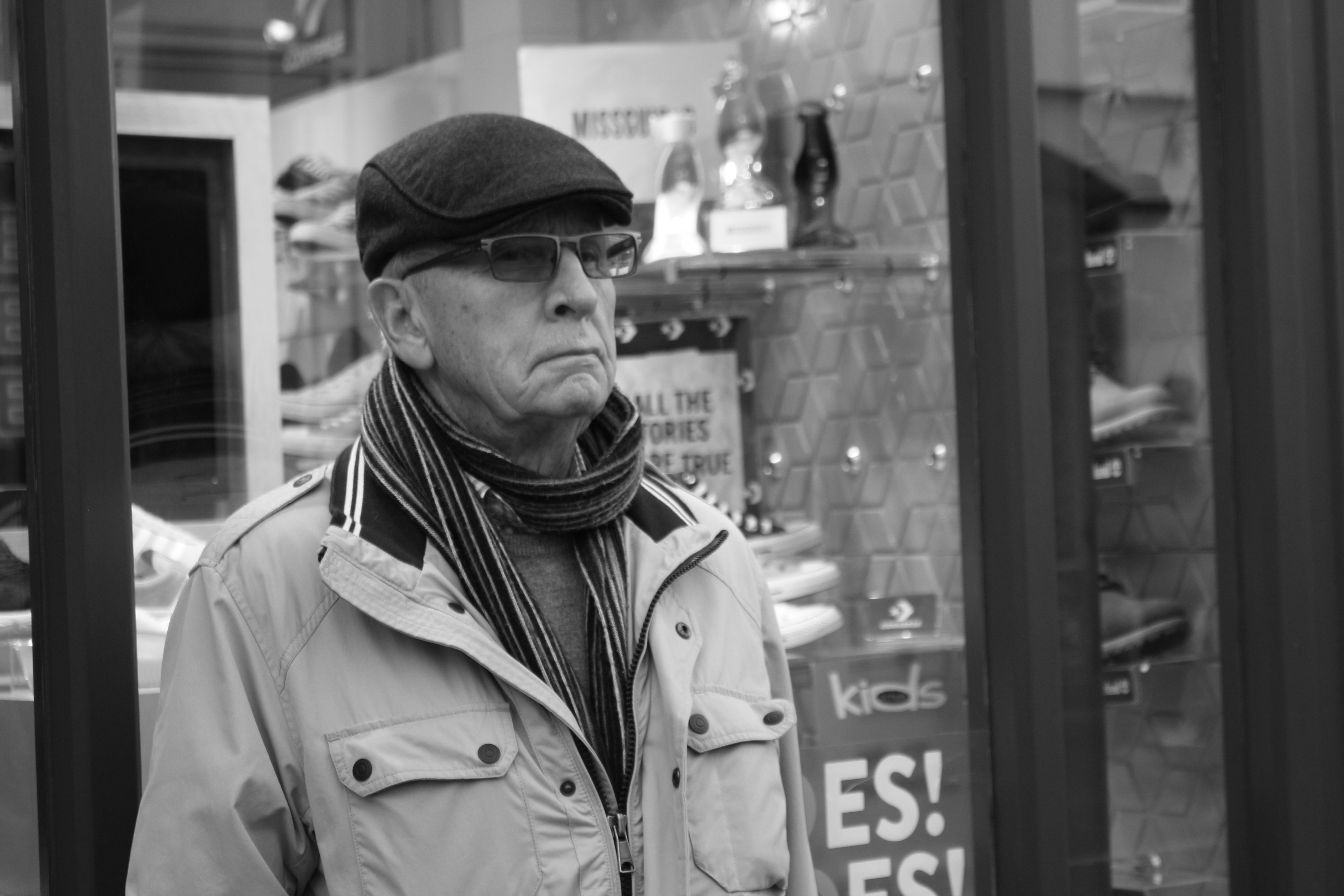 To me this an accurate representation of a grumpy/disapproving Jersey man, he embodies this well in his body language.
To me this an accurate representation of a grumpy/disapproving Jersey man, he embodies this well in his body language.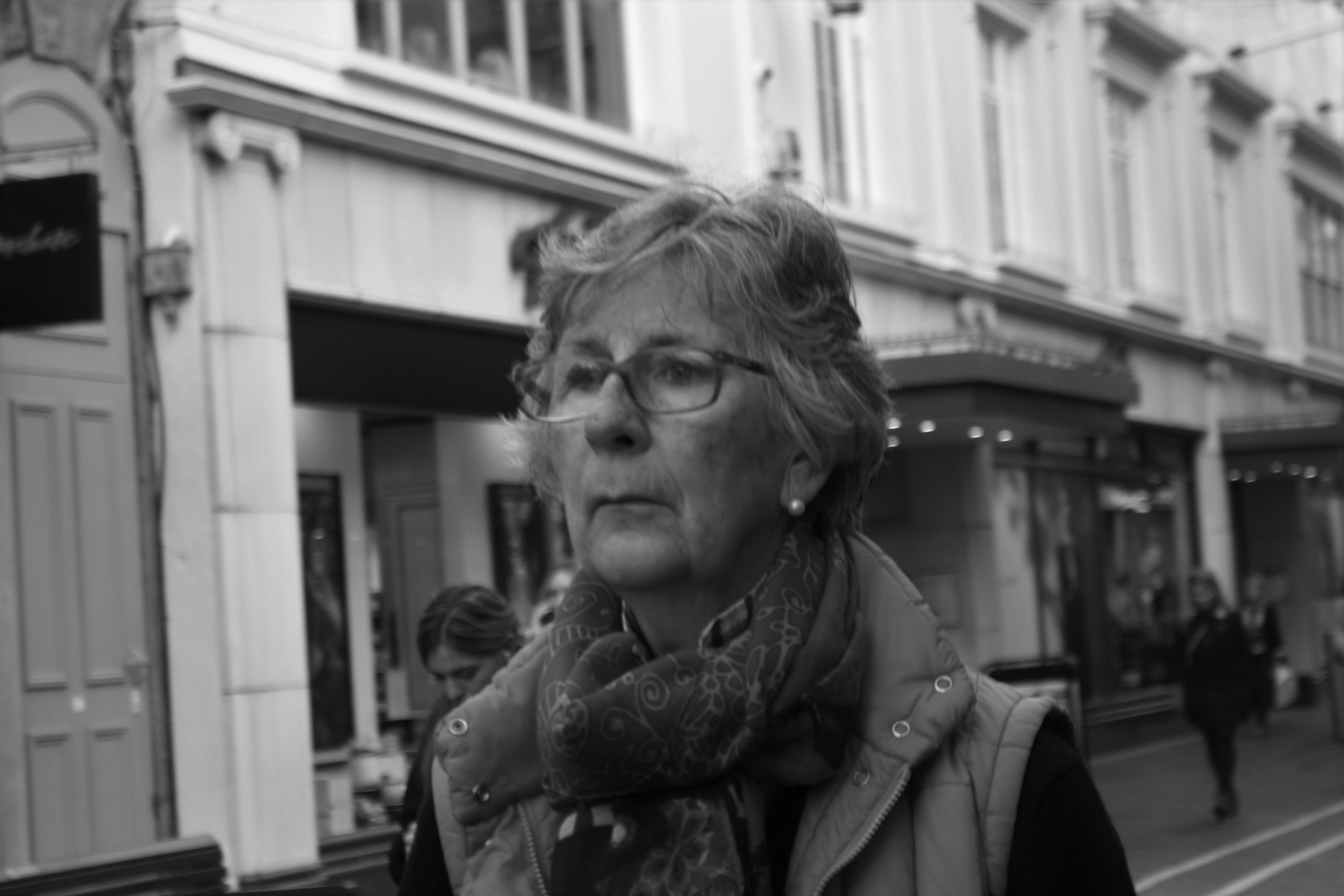 This woman’s expression can also be regarded as being disapproving or maybe a bit sad in some ways.
This woman’s expression can also be regarded as being disapproving or maybe a bit sad in some ways.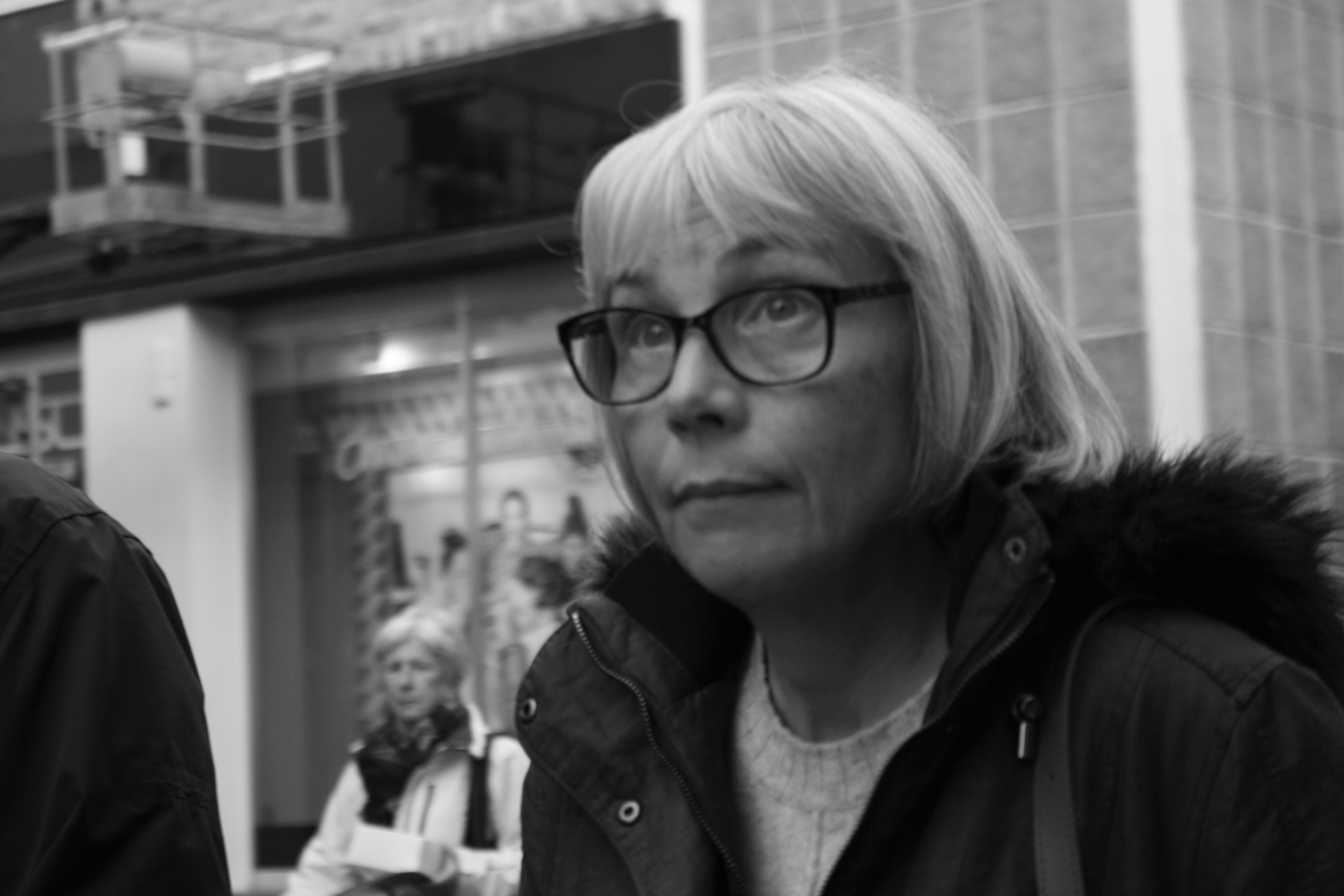 To me this woman looking up to the sky seems quite hopeful, she looks as if she could be waiting for something.
To me this woman looking up to the sky seems quite hopeful, she looks as if she could be waiting for something.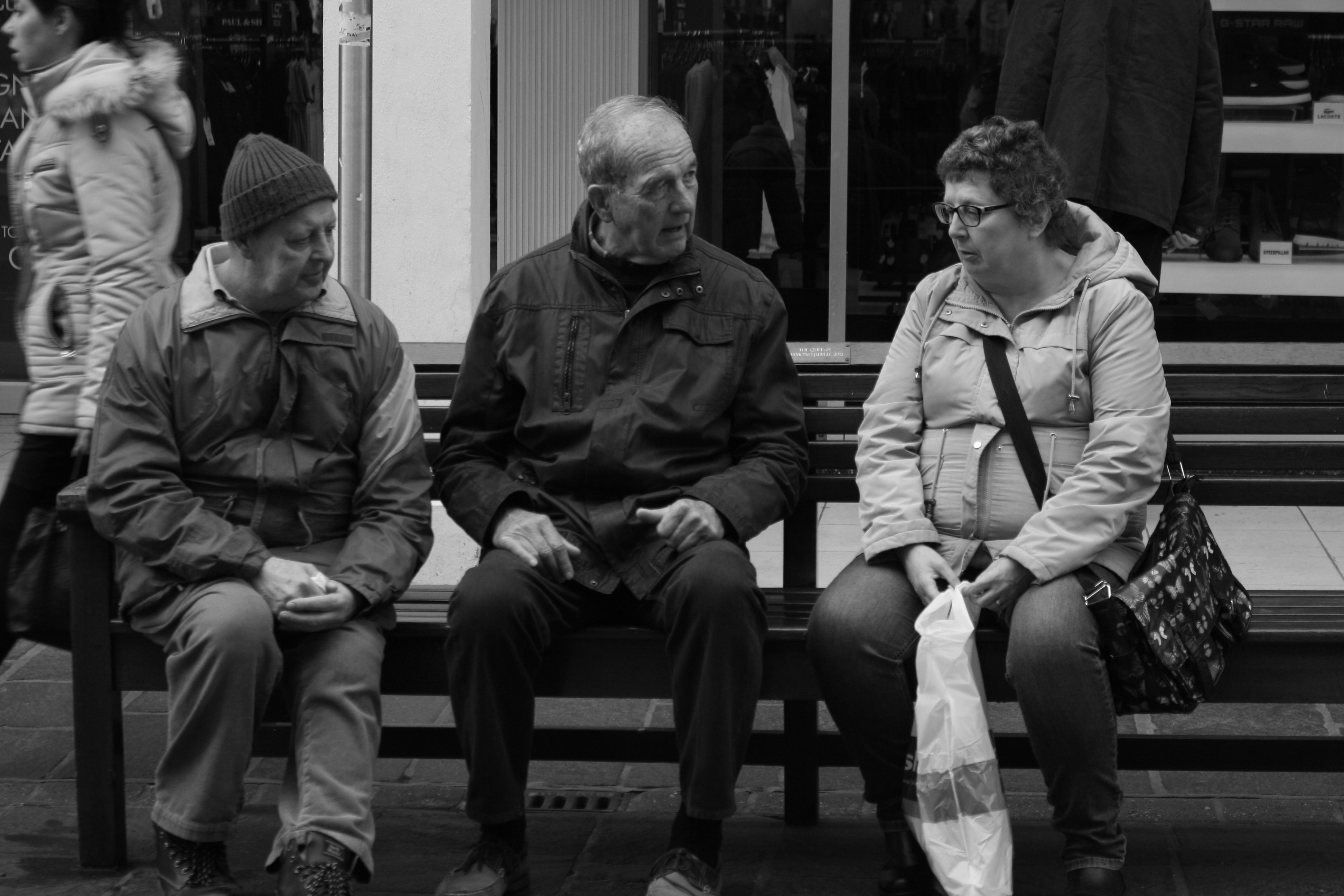 This trio all seem to be in the same slumped body posture, all looking a bit depressed over something which we will never know about.
This trio all seem to be in the same slumped body posture, all looking a bit depressed over something which we will never know about.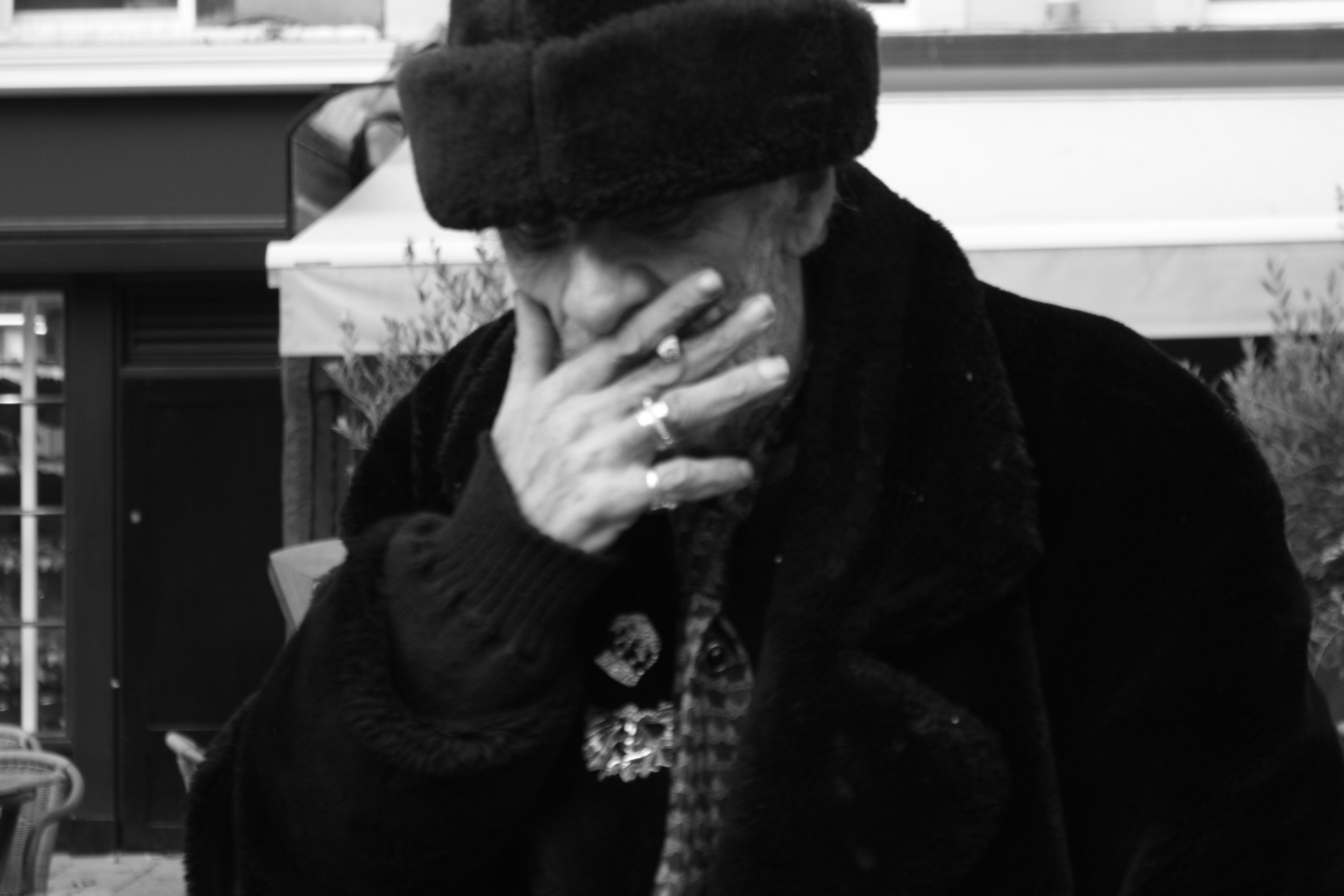 This is one of the photos where I had the perfect opportunity but I had my camera was out of focus, however I still like this one.
This is one of the photos where I had the perfect opportunity but I had my camera was out of focus, however I still like this one.
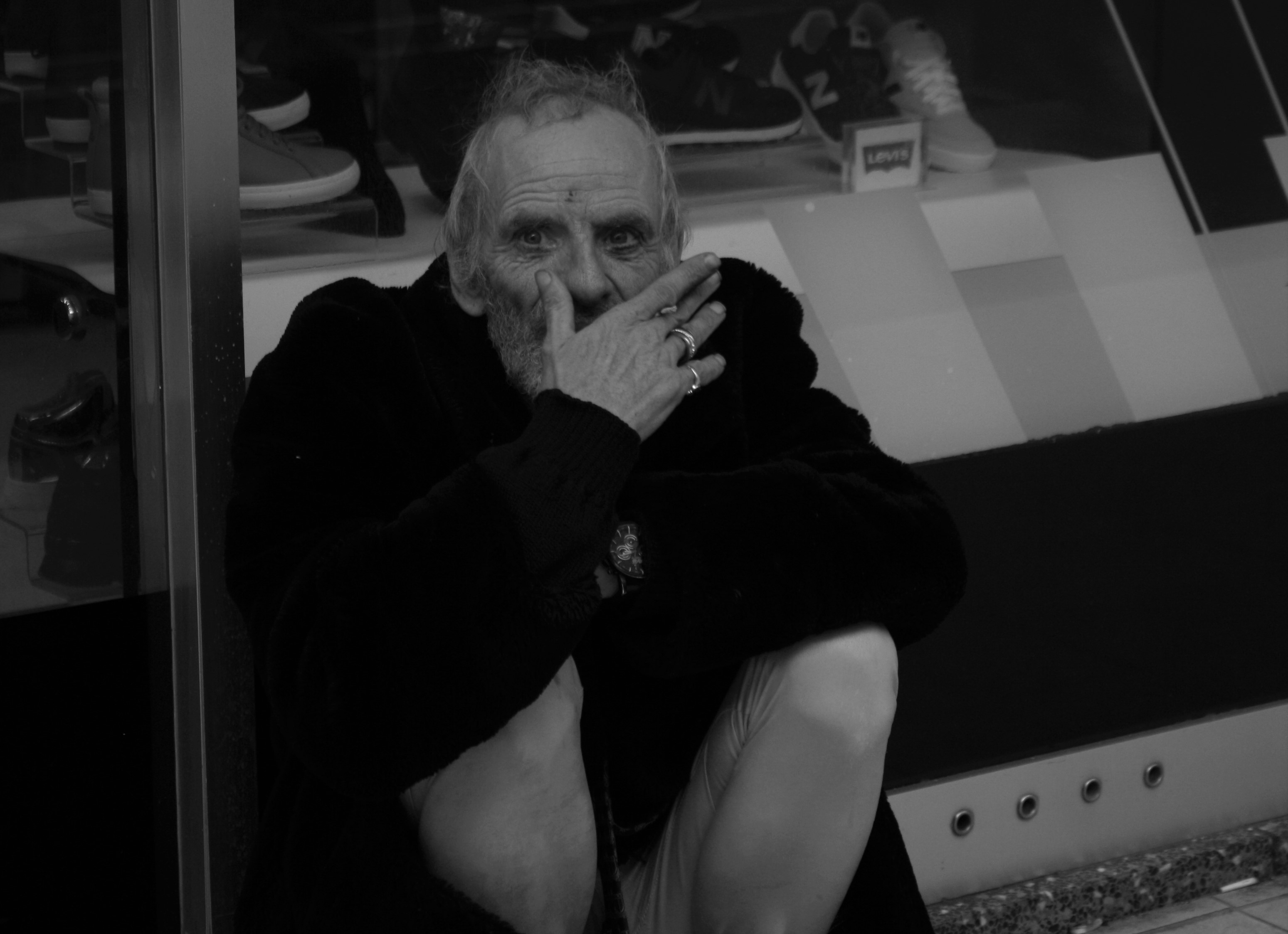
 This was taking whilst we began talking to him again, I like this stare directly into the camera.
This was taking whilst we began talking to him again, I like this stare directly into the camera.
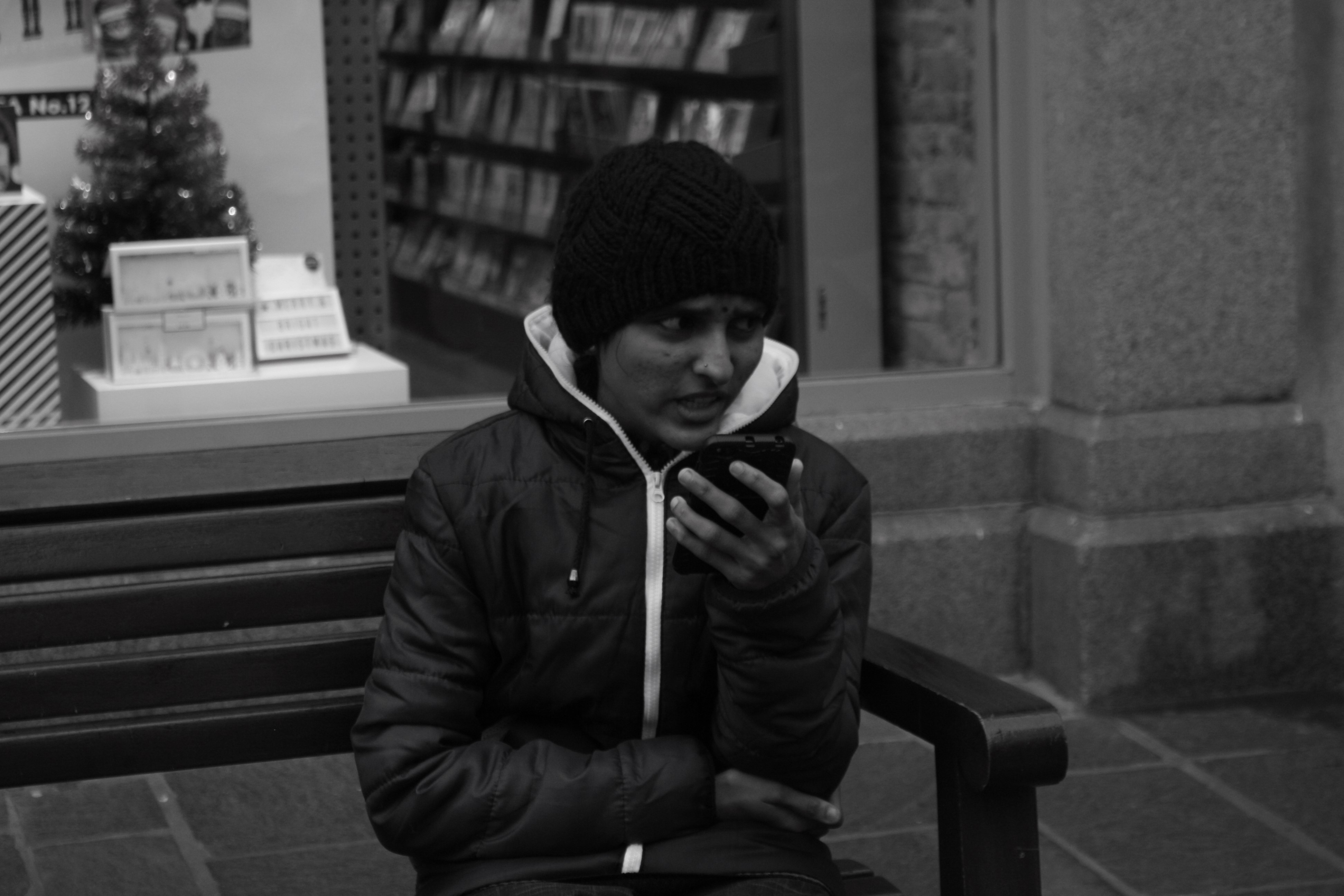
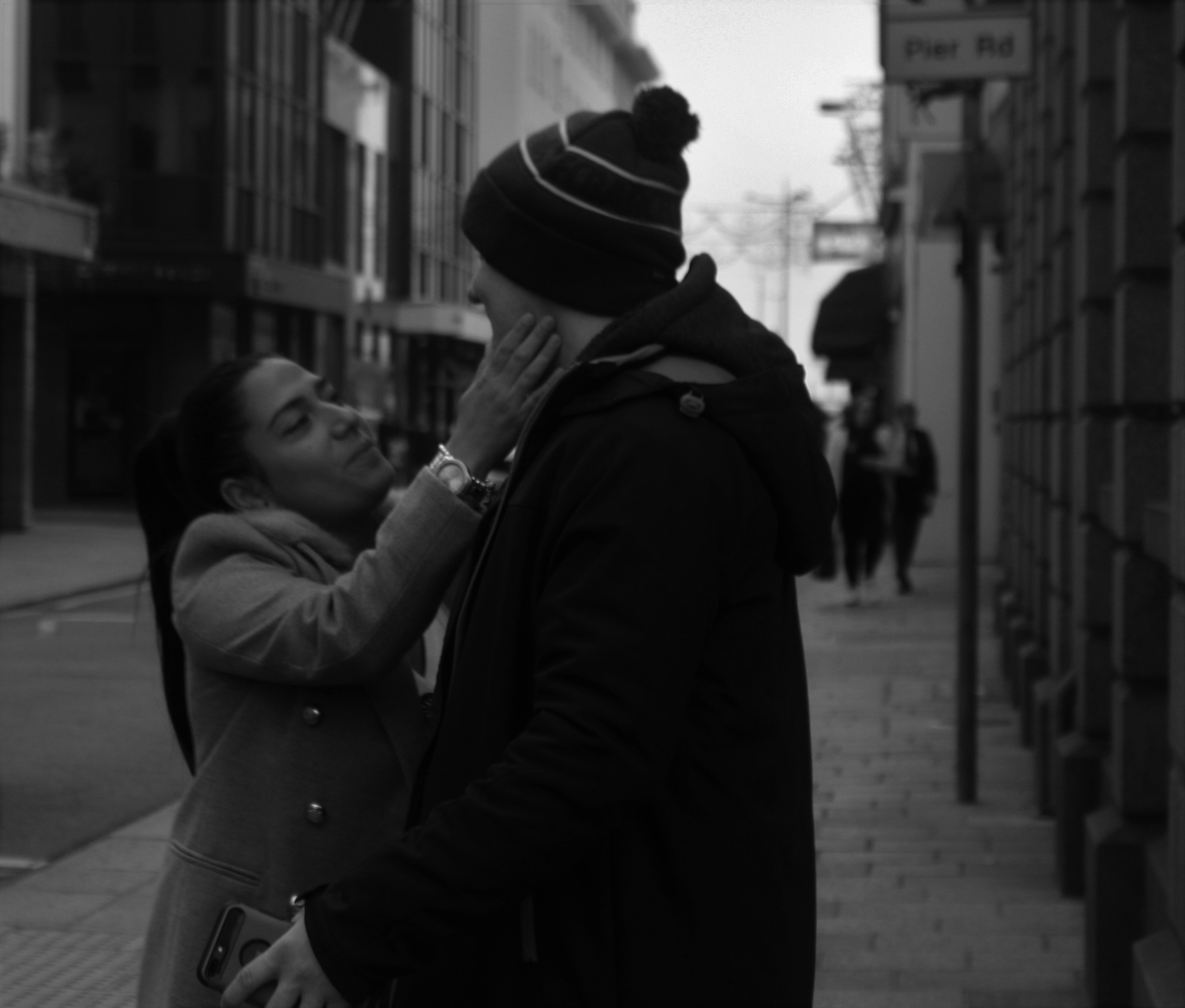
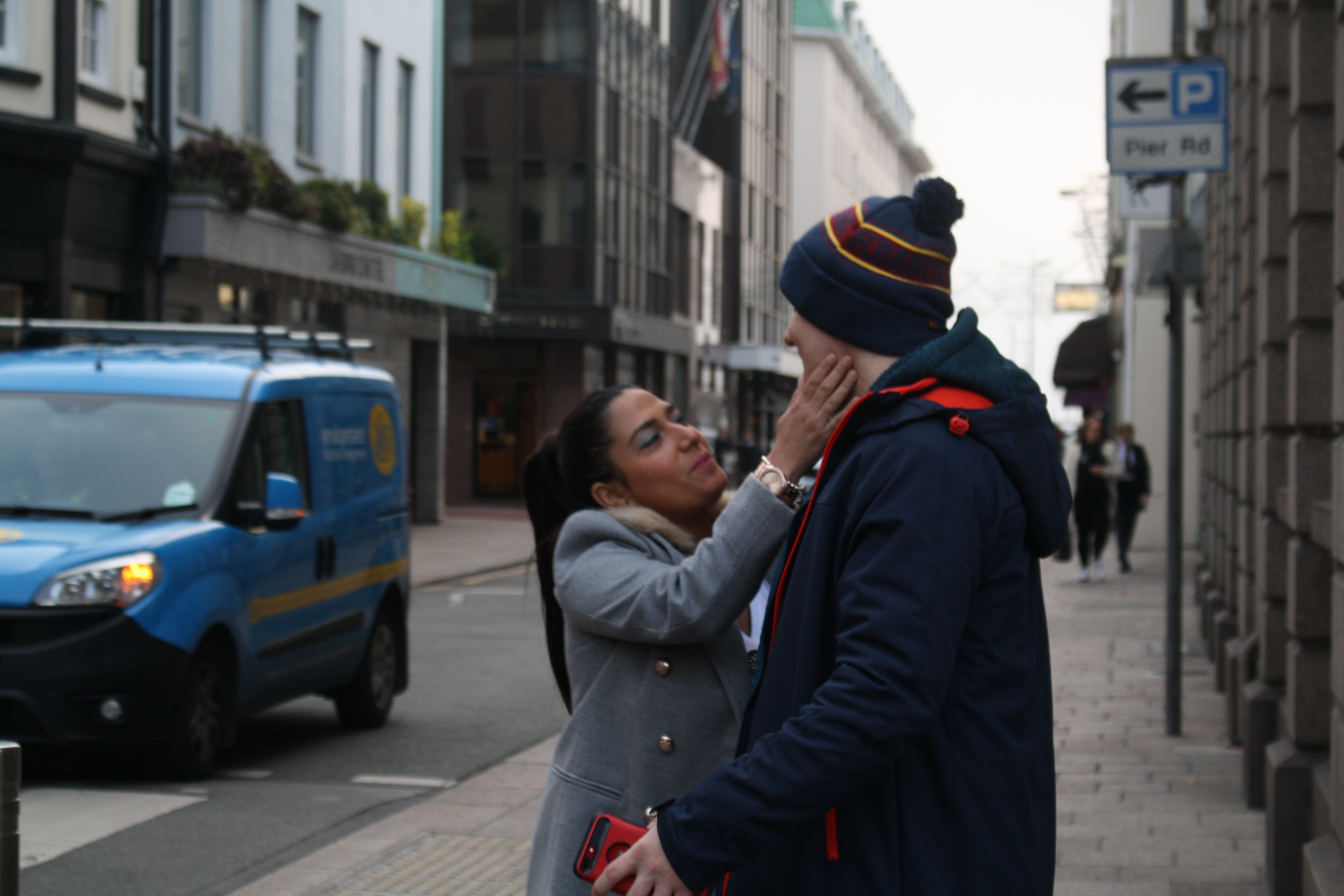
This one was very much a ‘Decisive Moment’ photo for me. I saw what may be a couple or perhaps even a mother and son and just took the photo without thinking much about it, they seemed to be having a proud moment where she just touched his face in admiration. I like this one as it juxtaposes the others which are quite dark and dismal.

